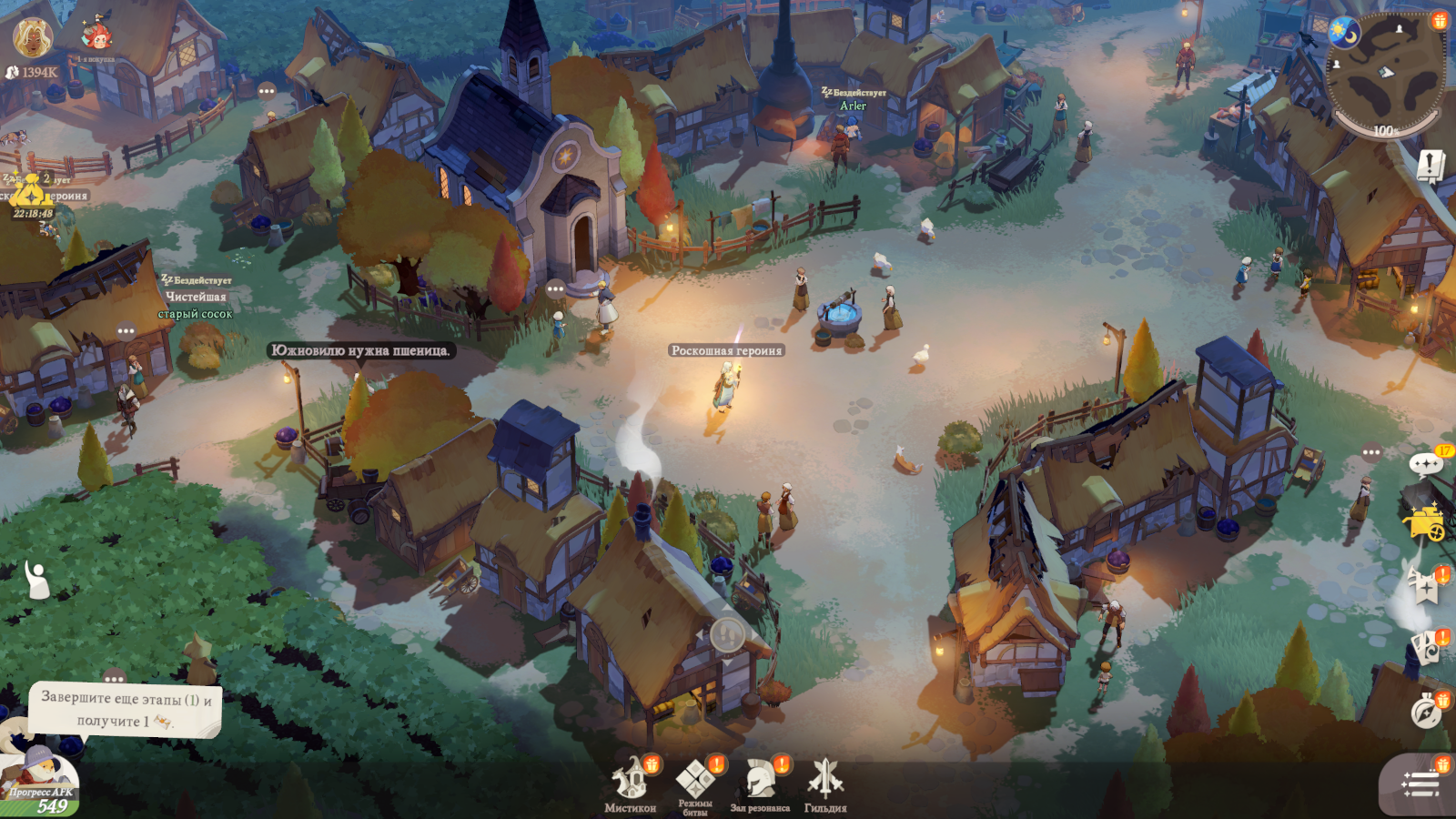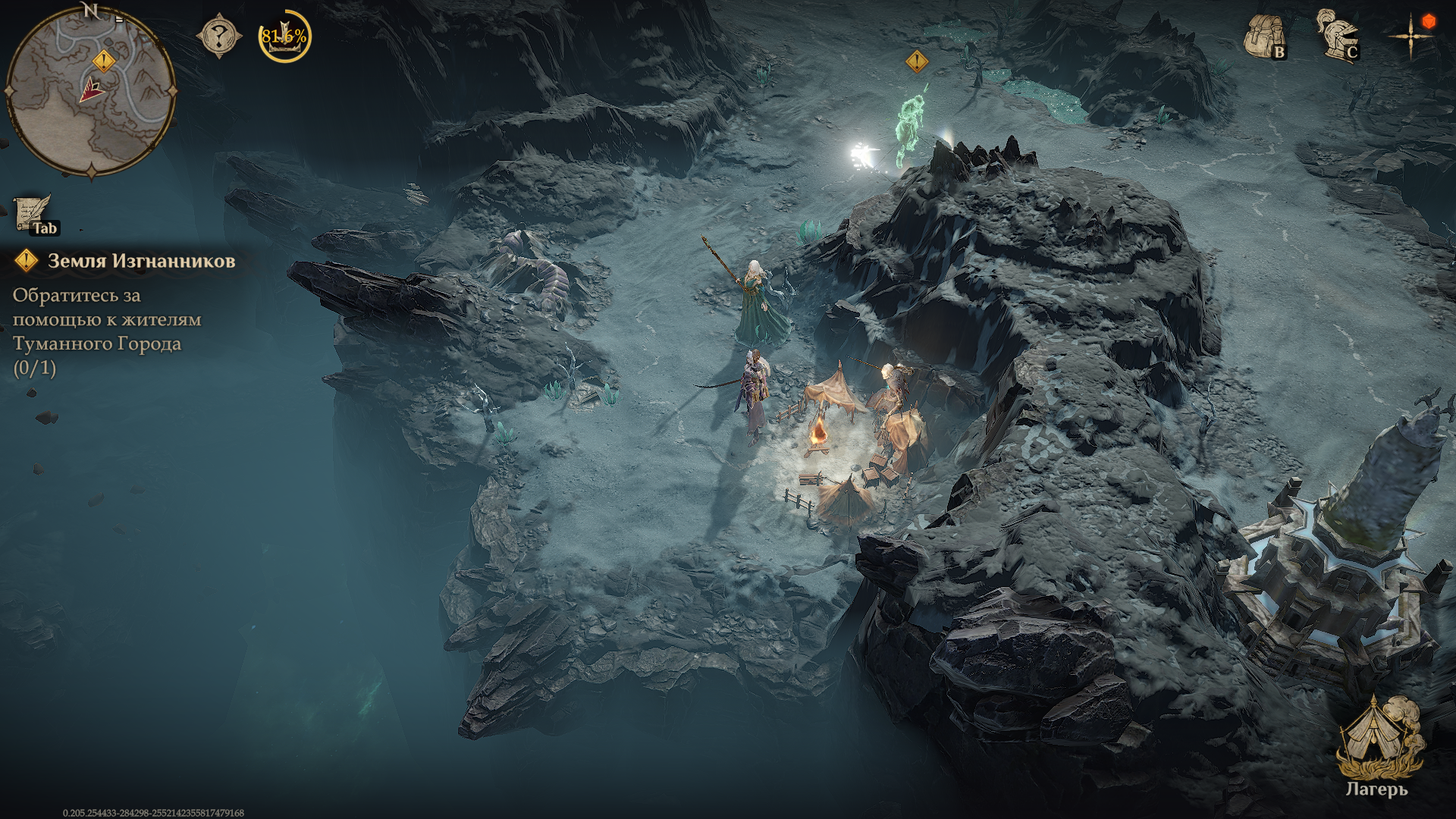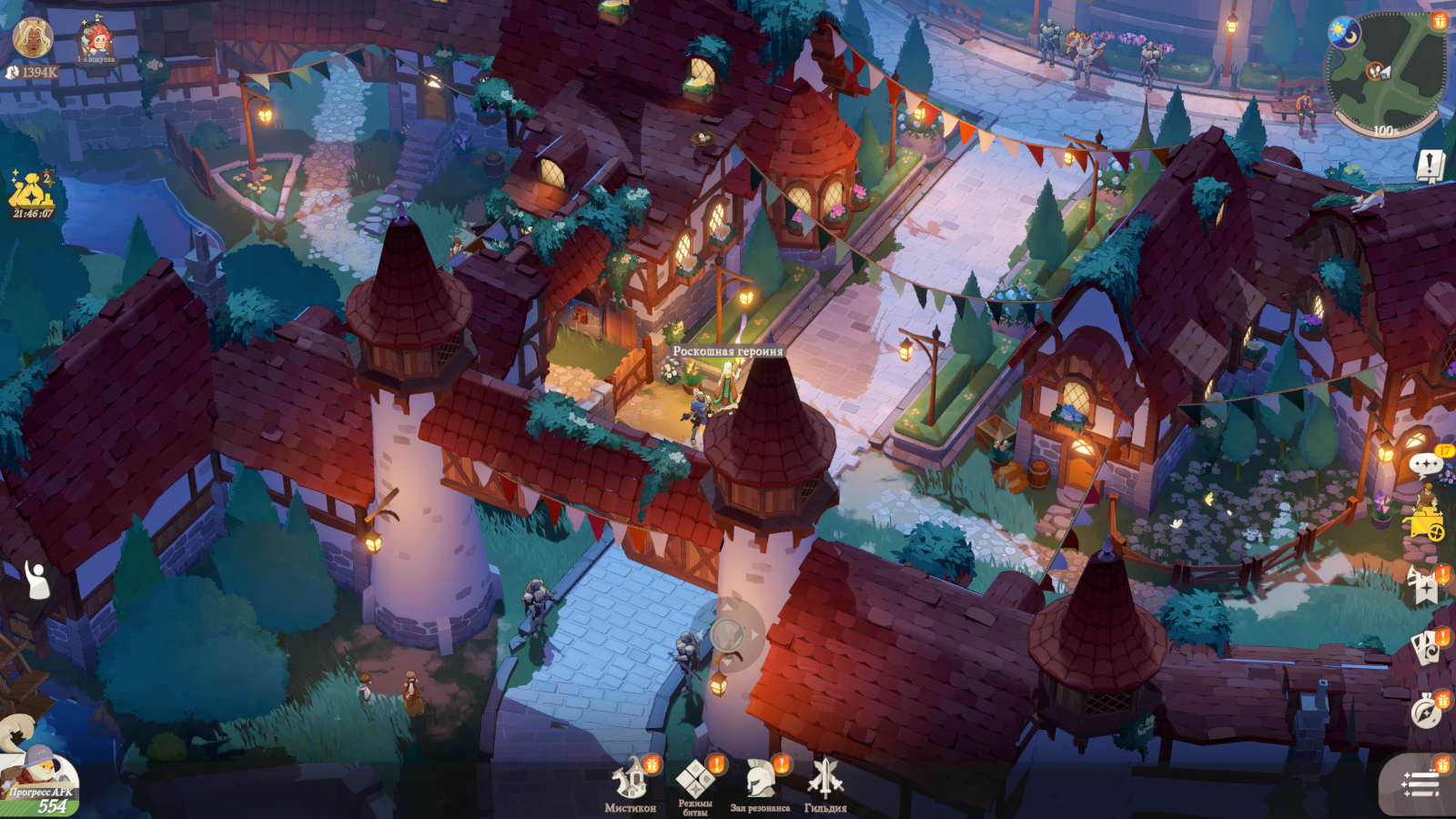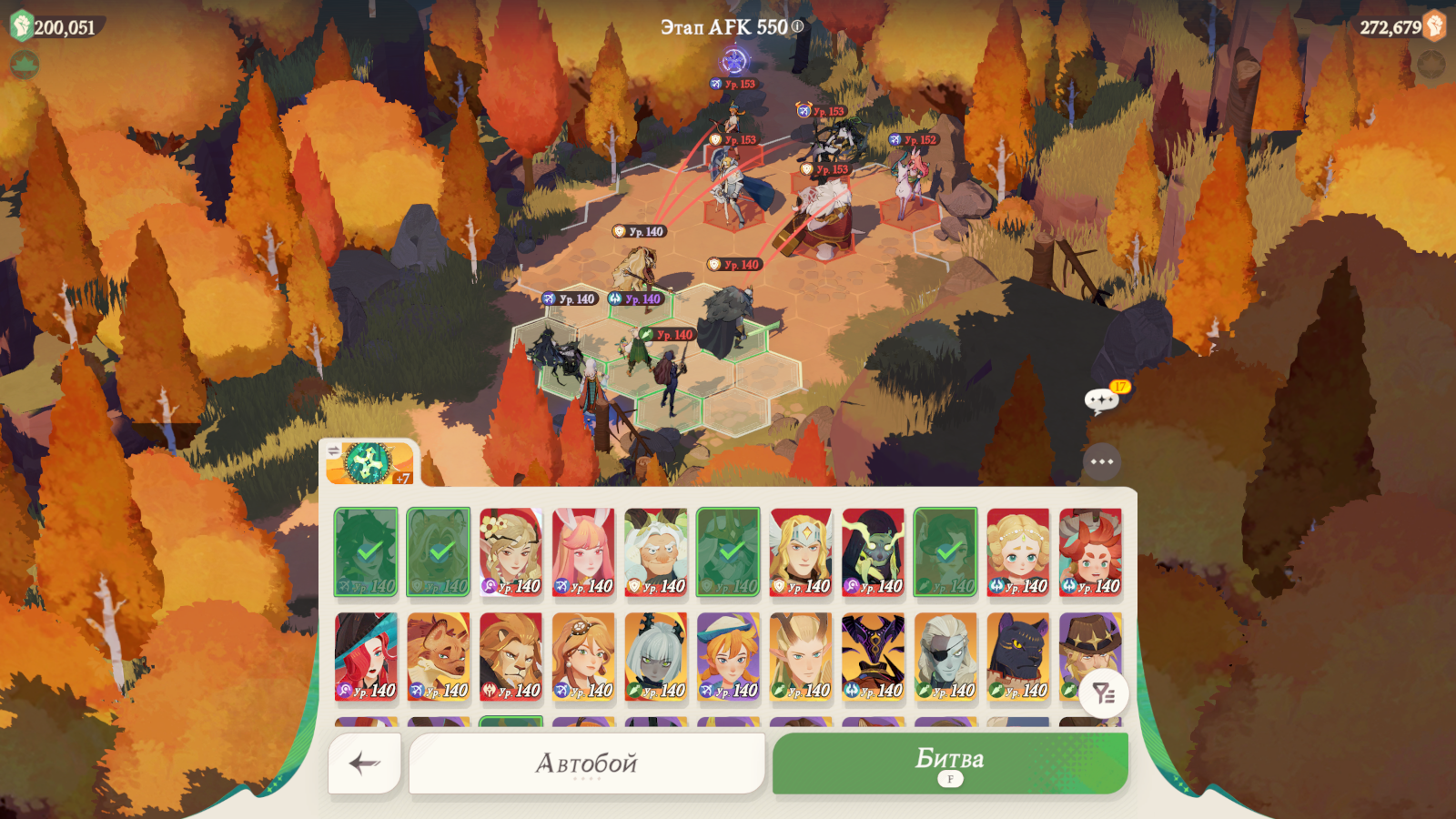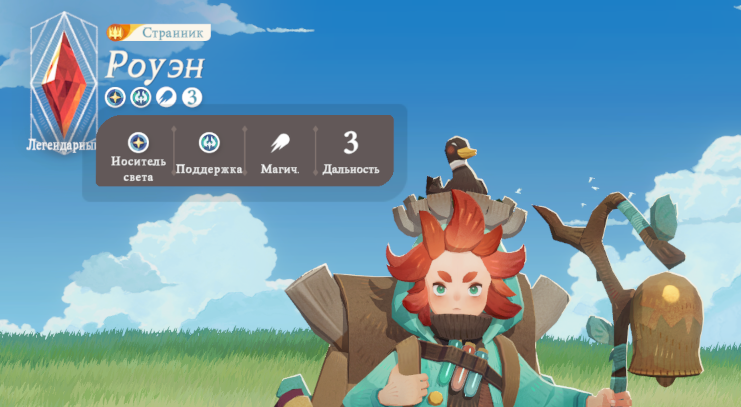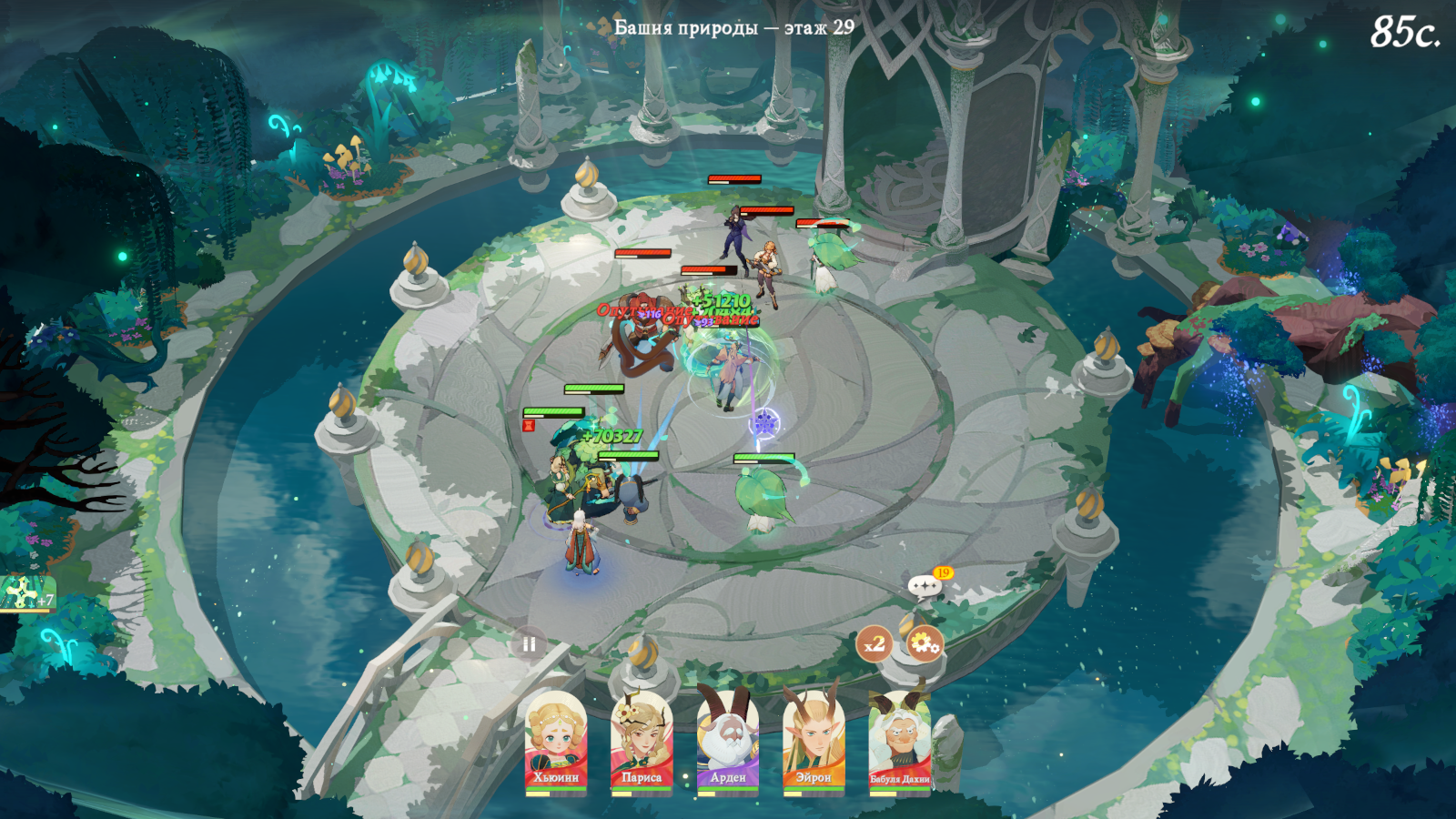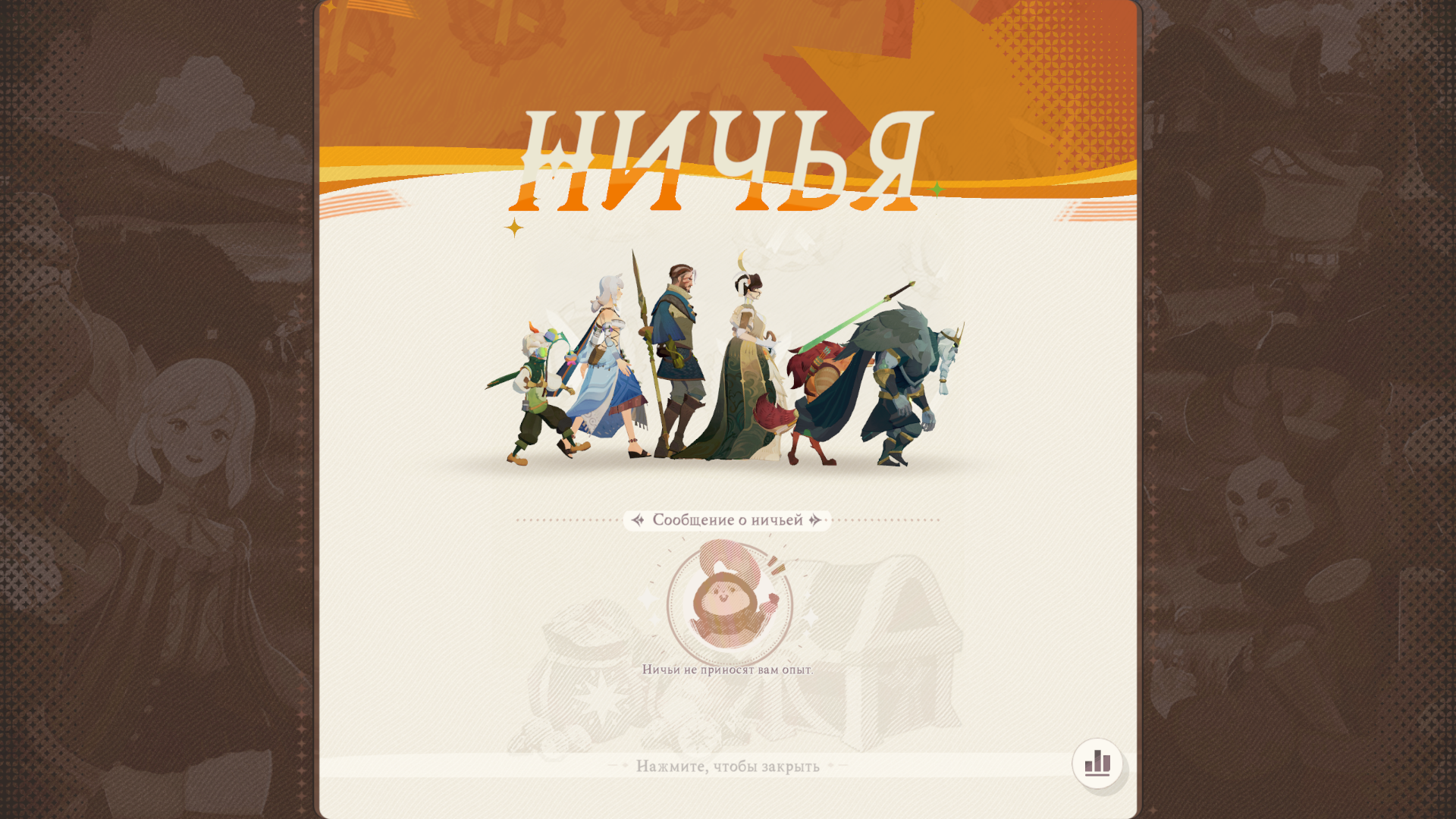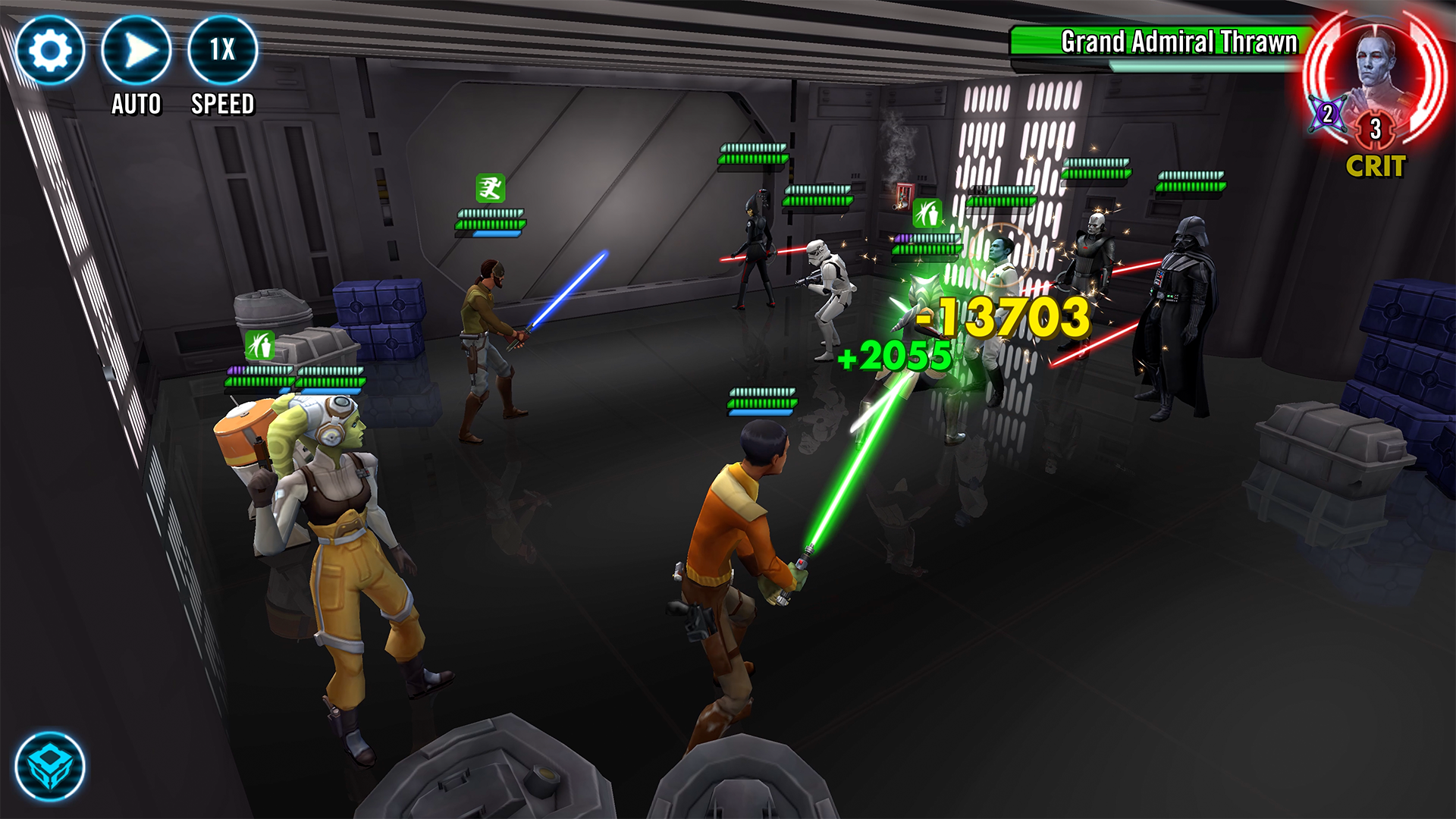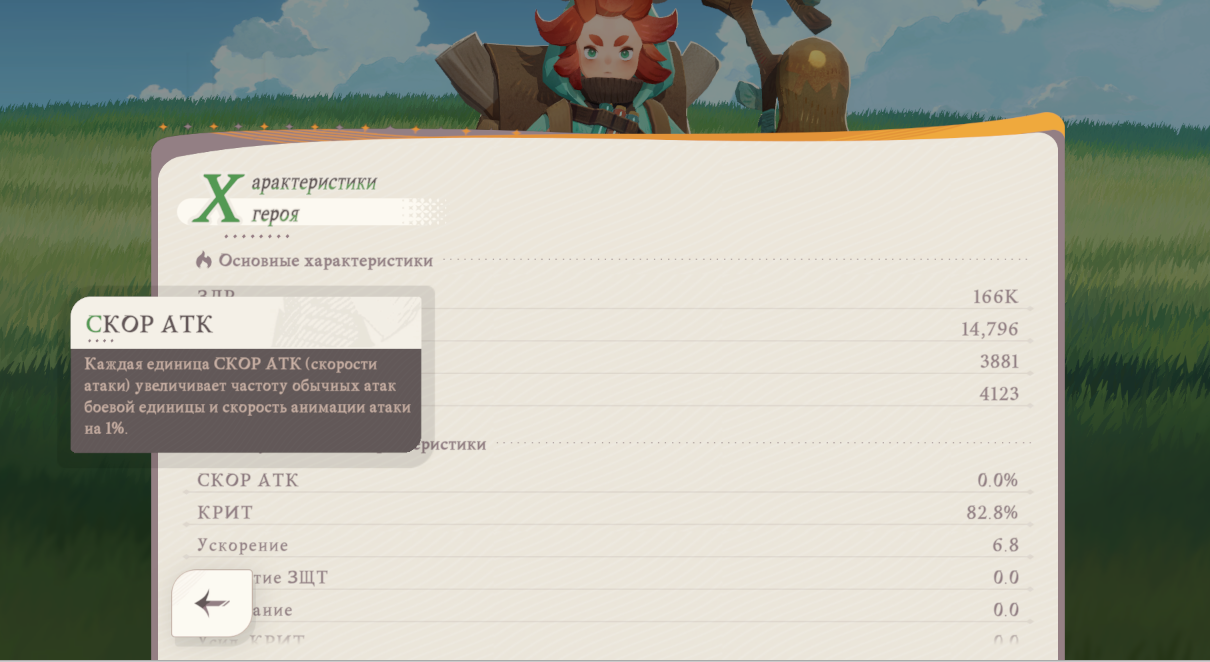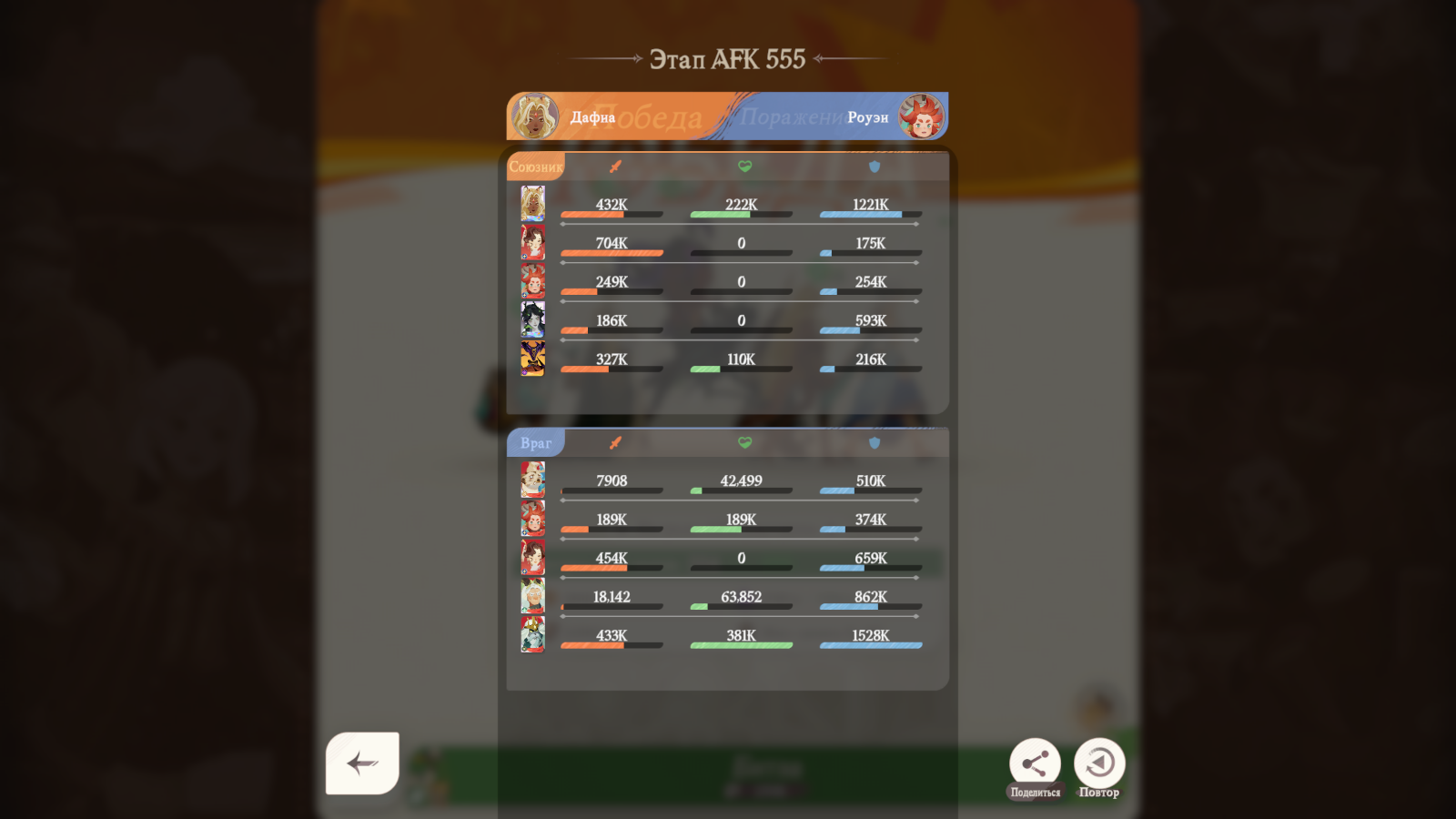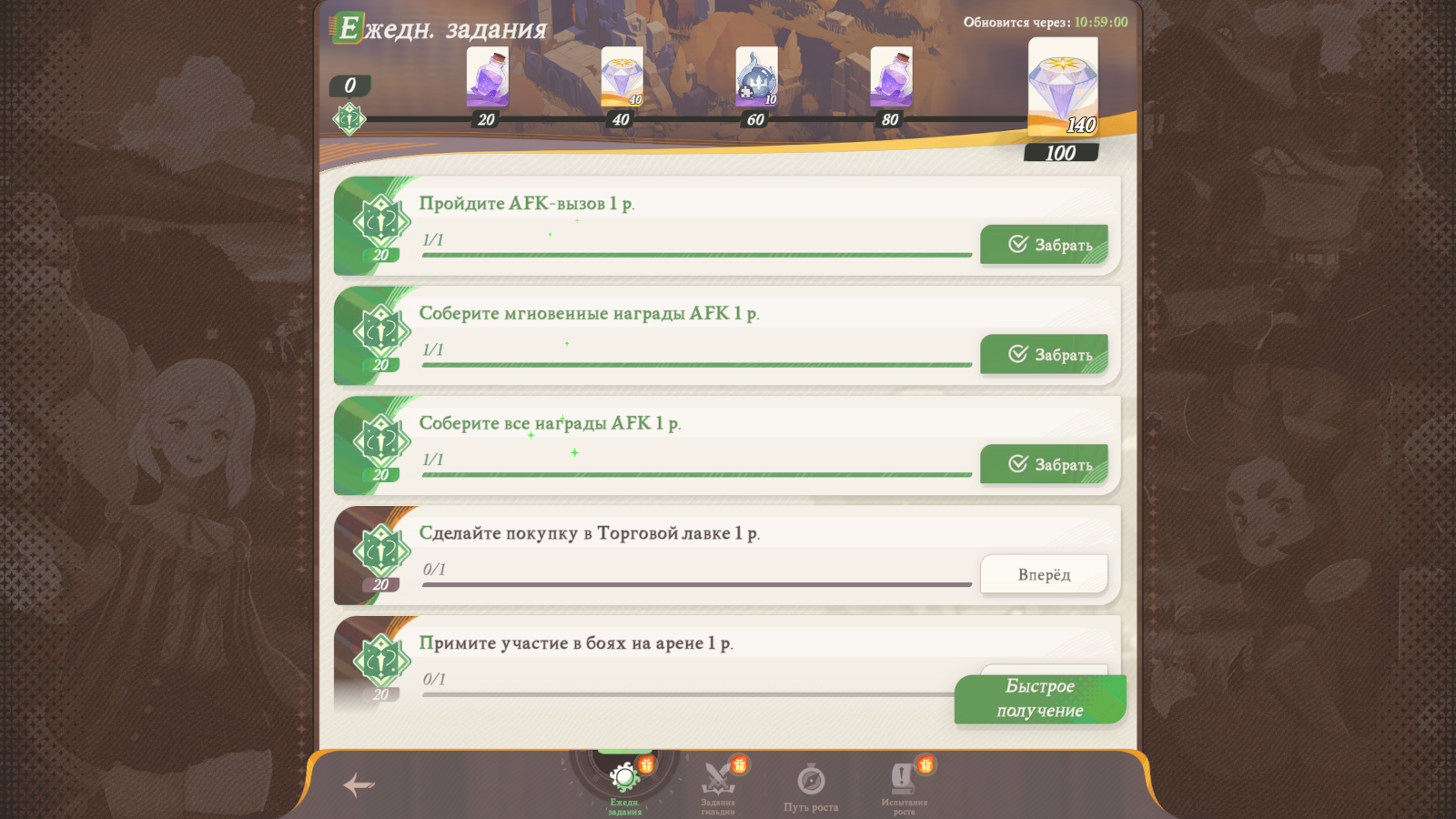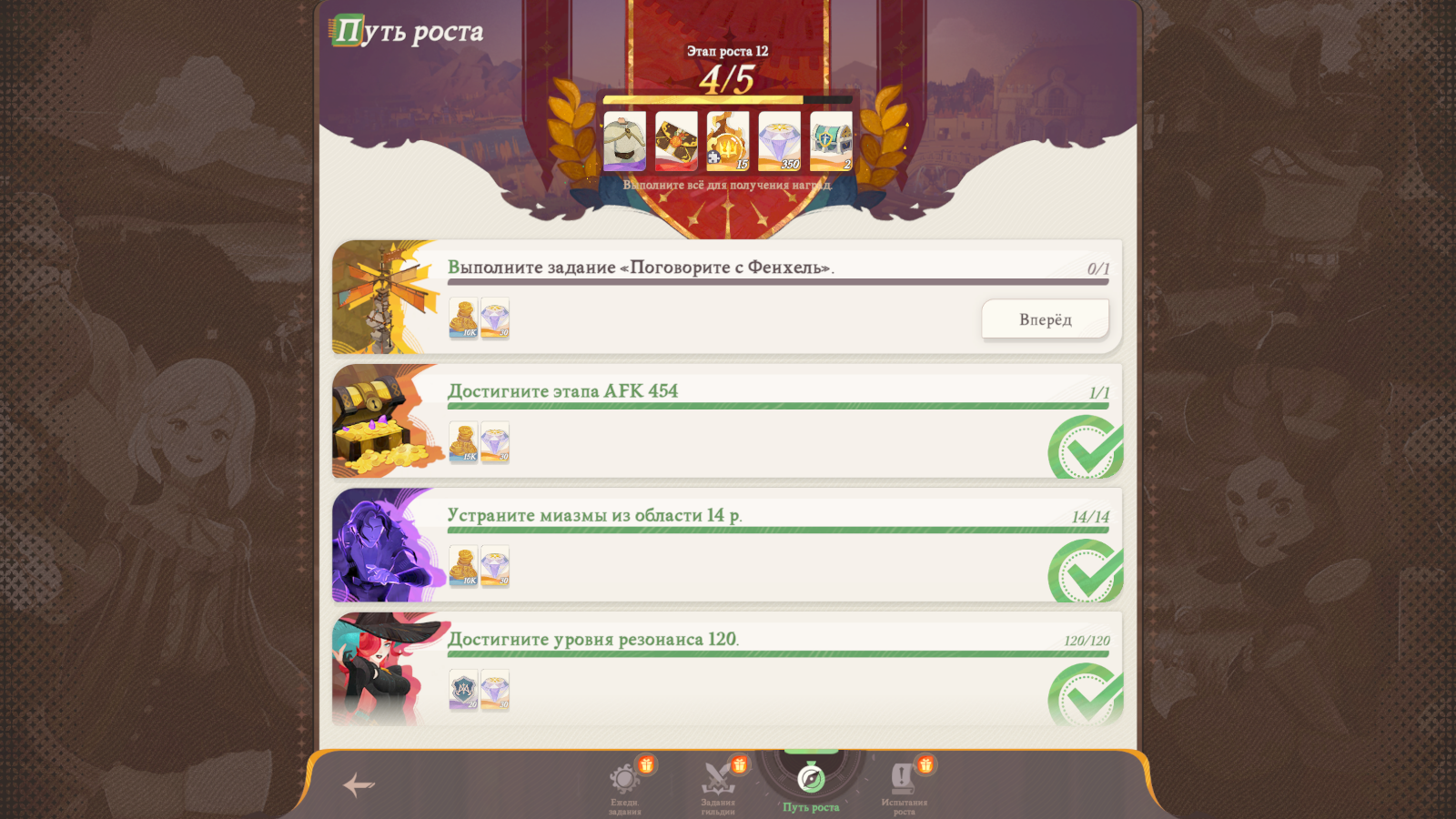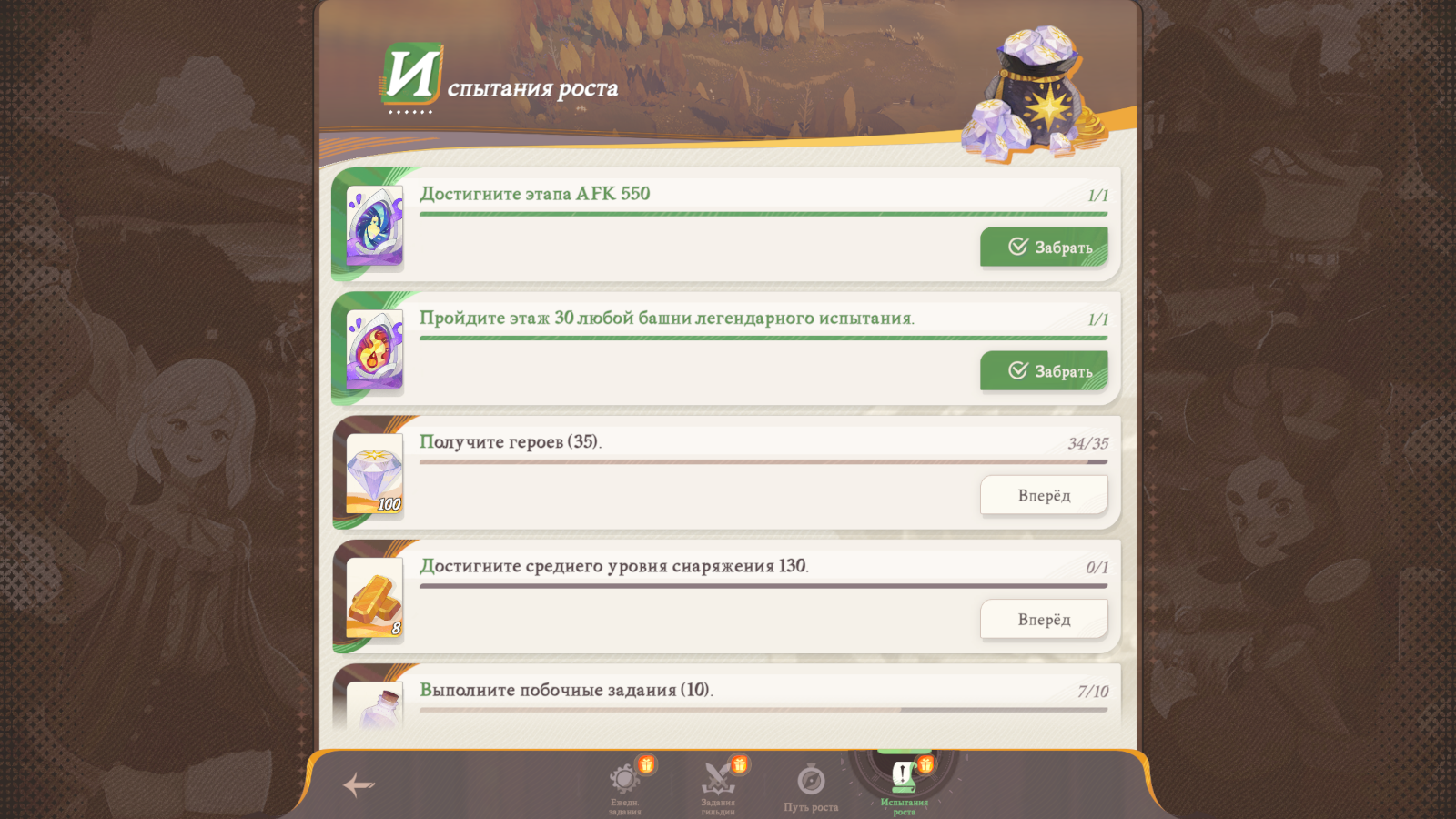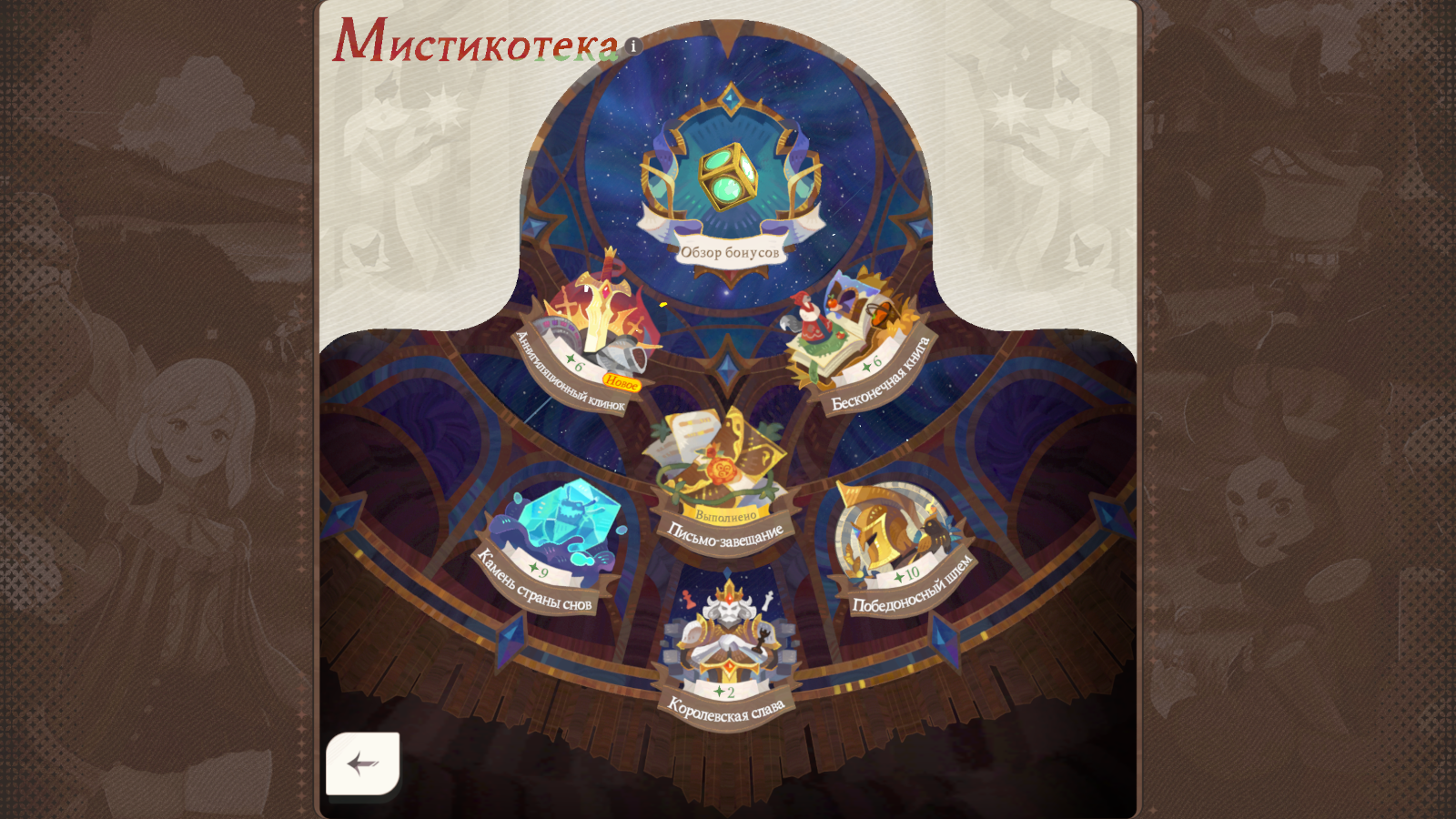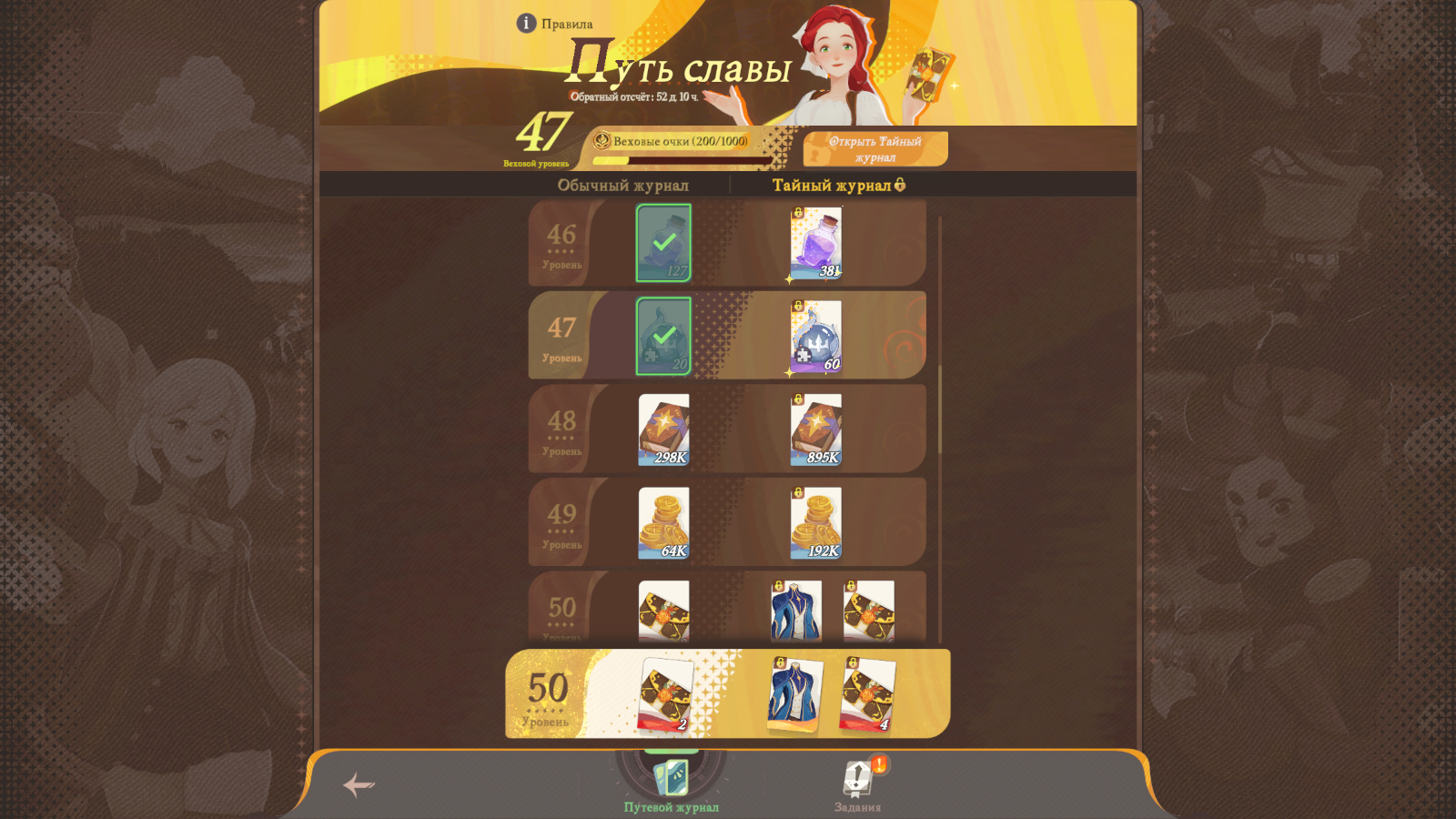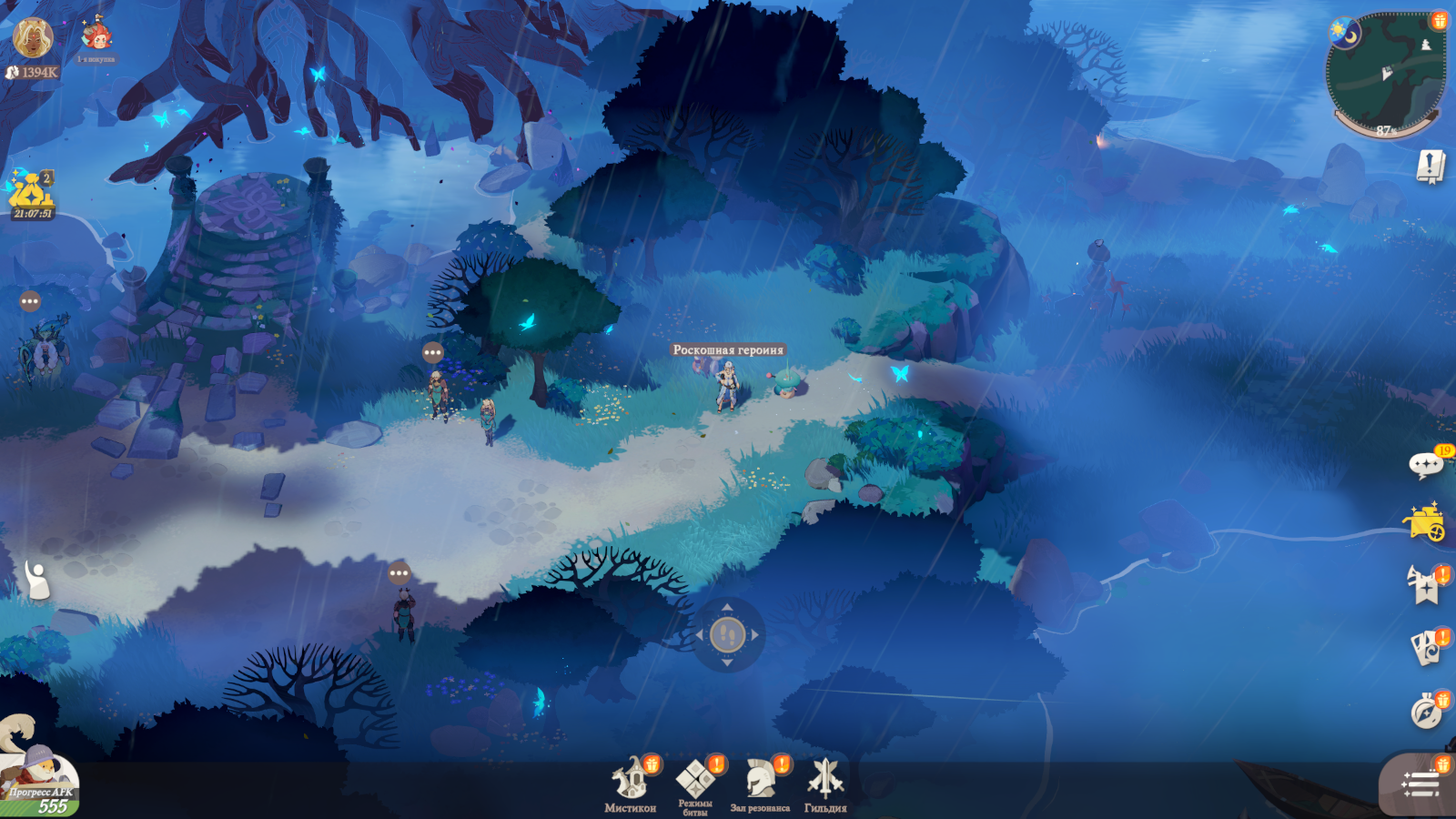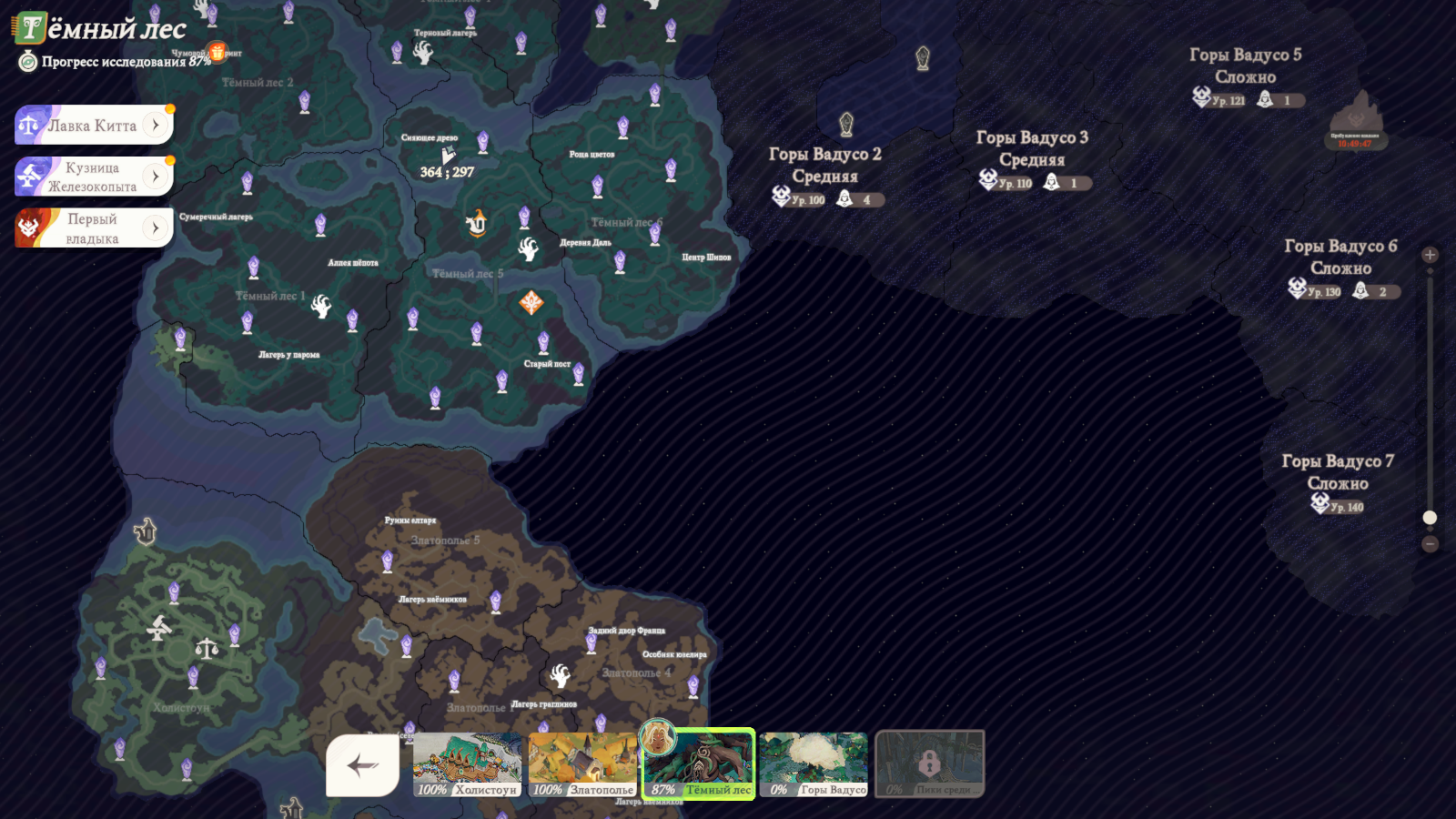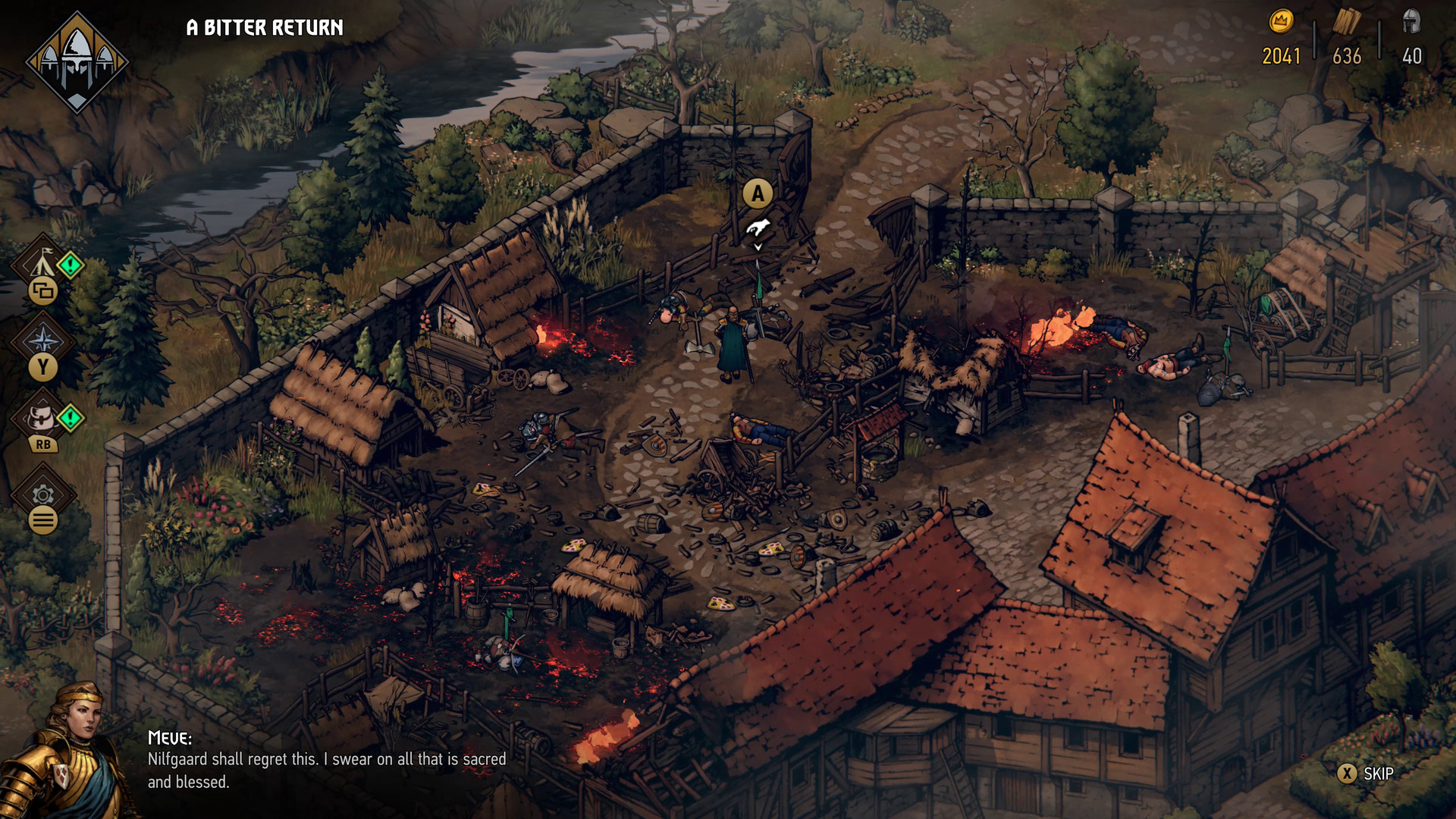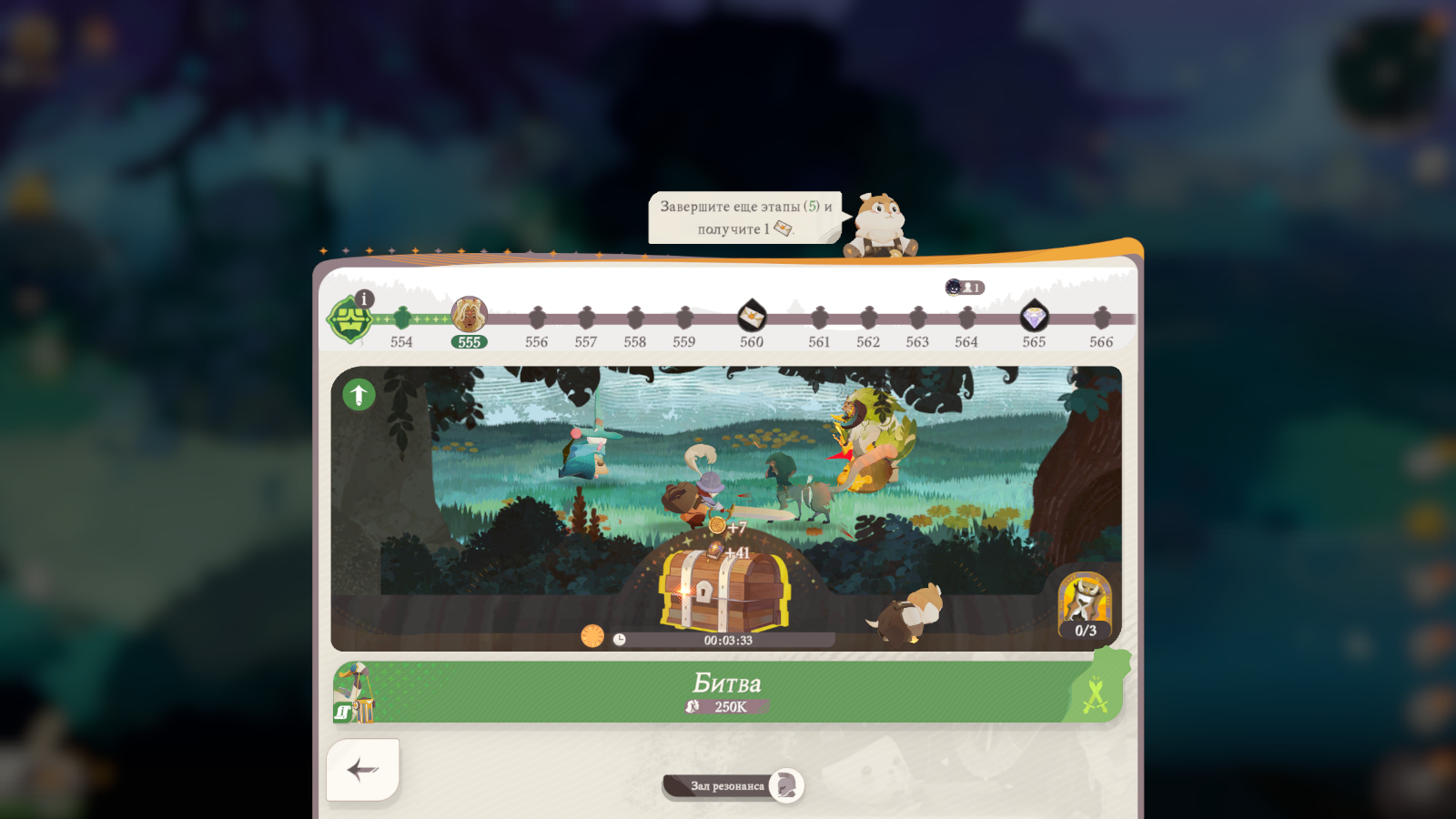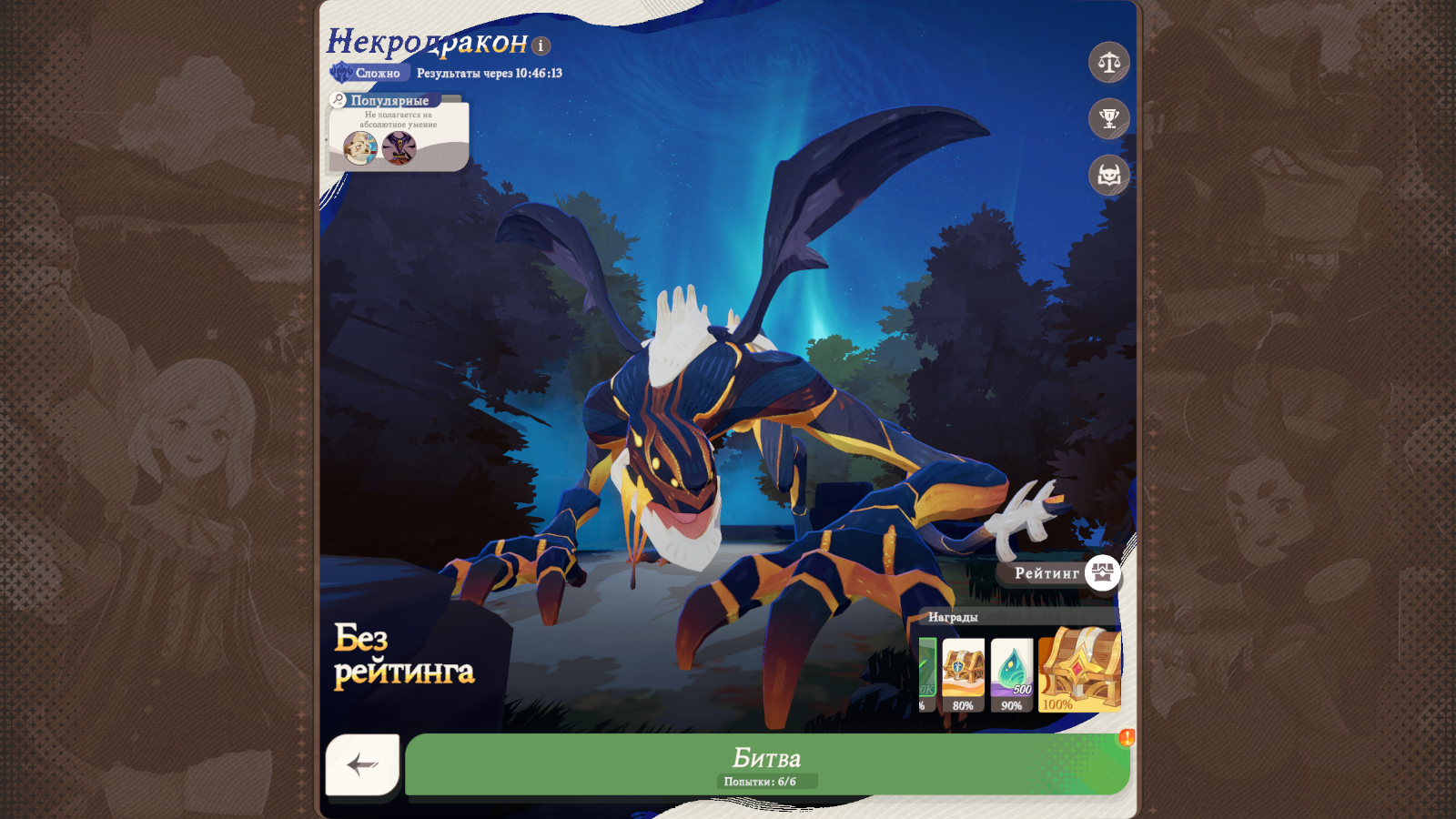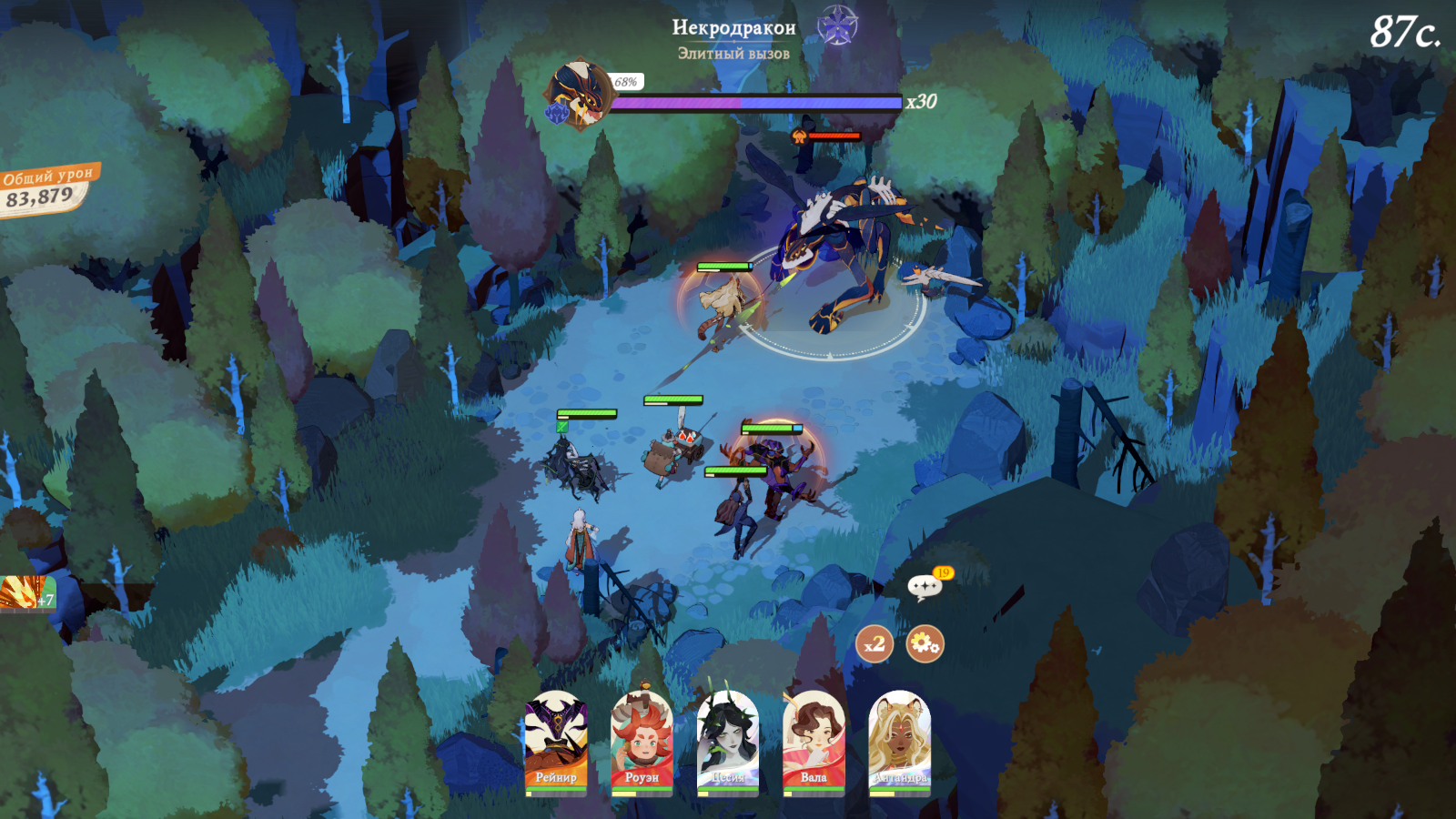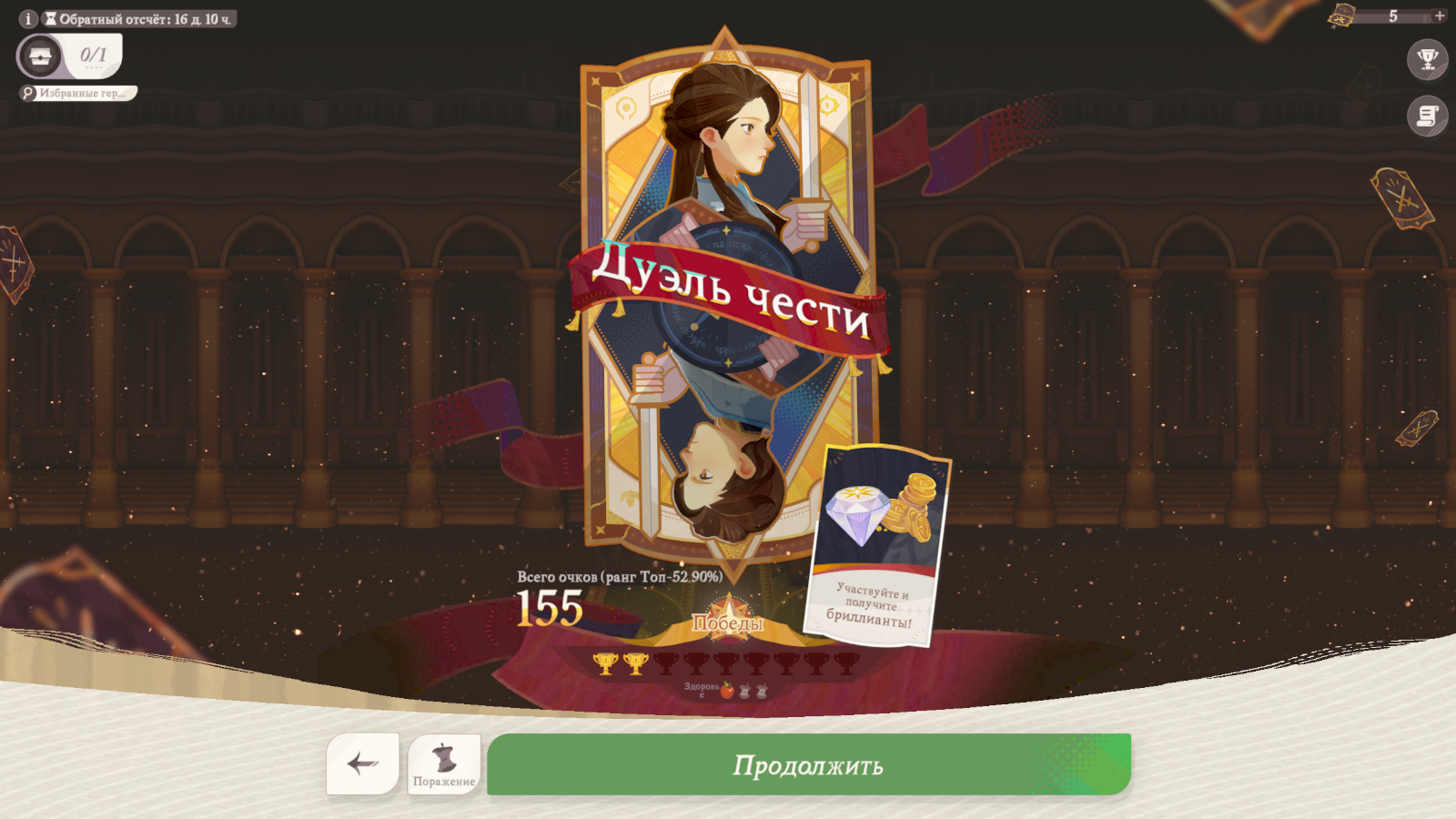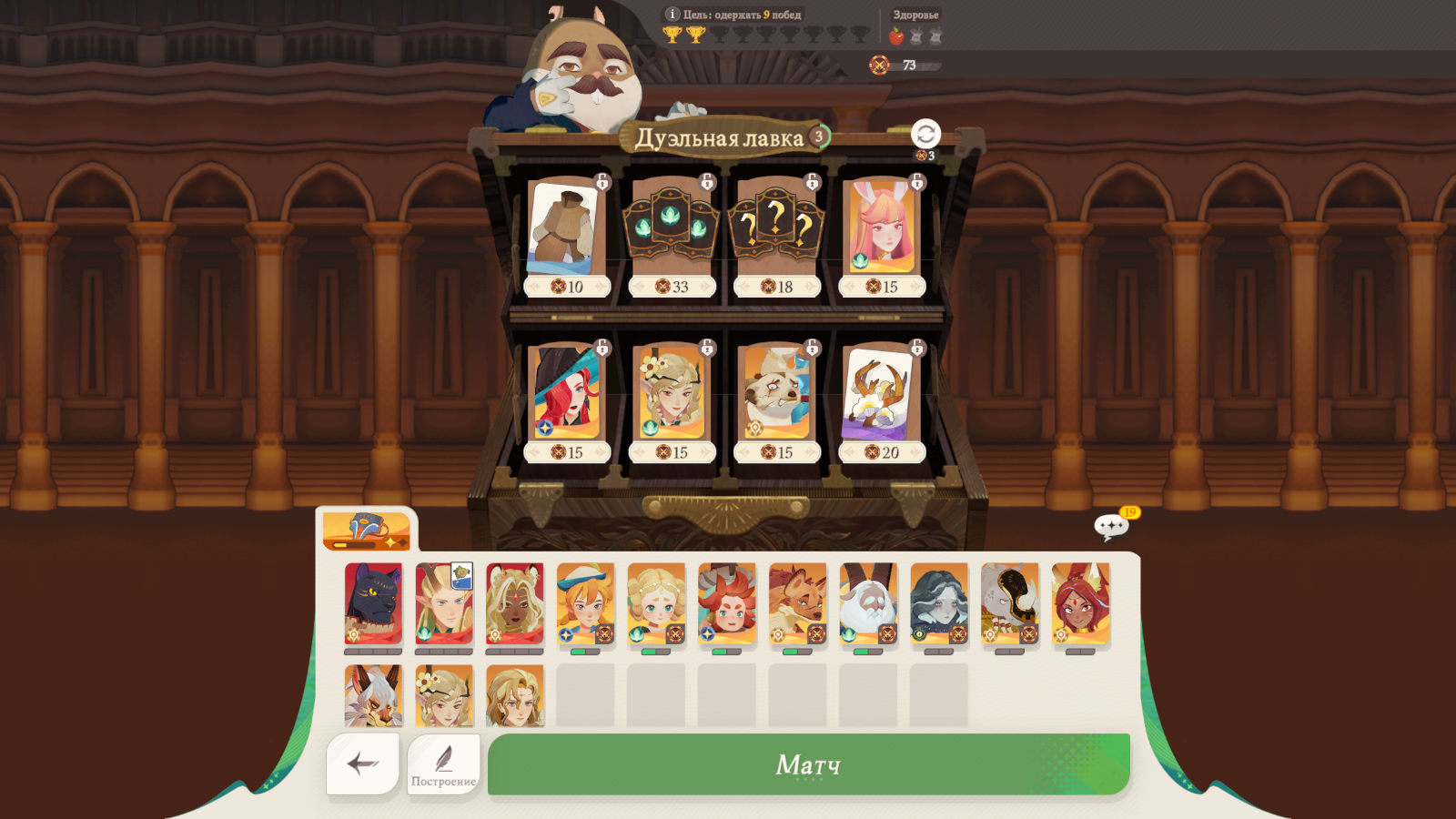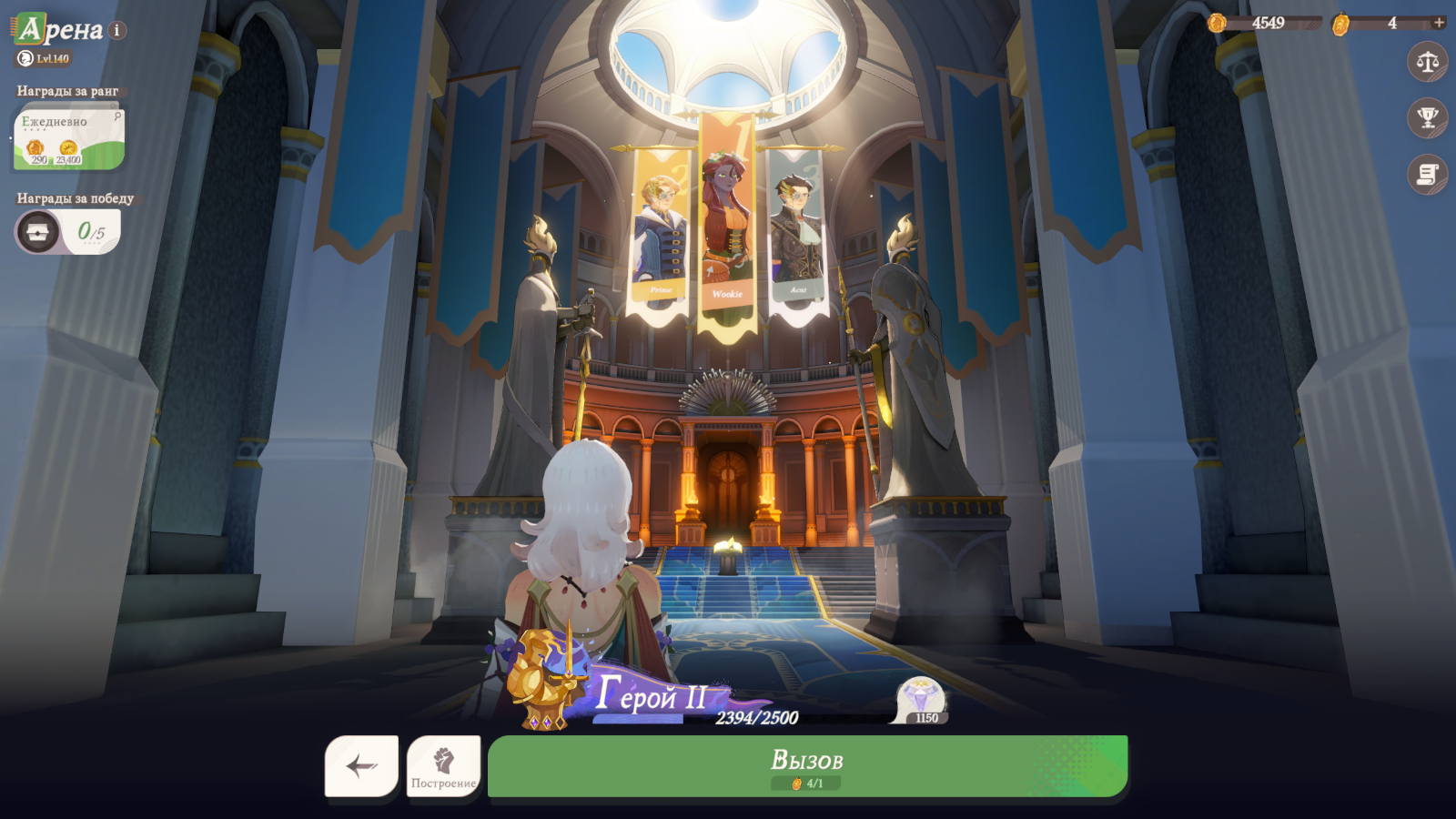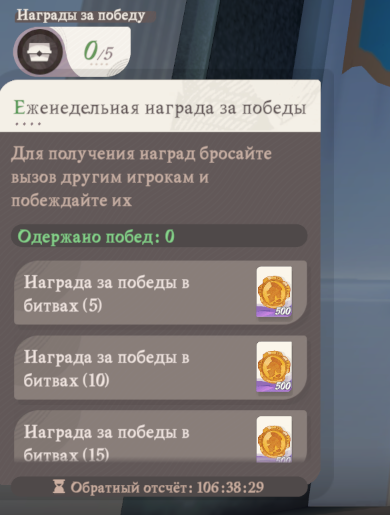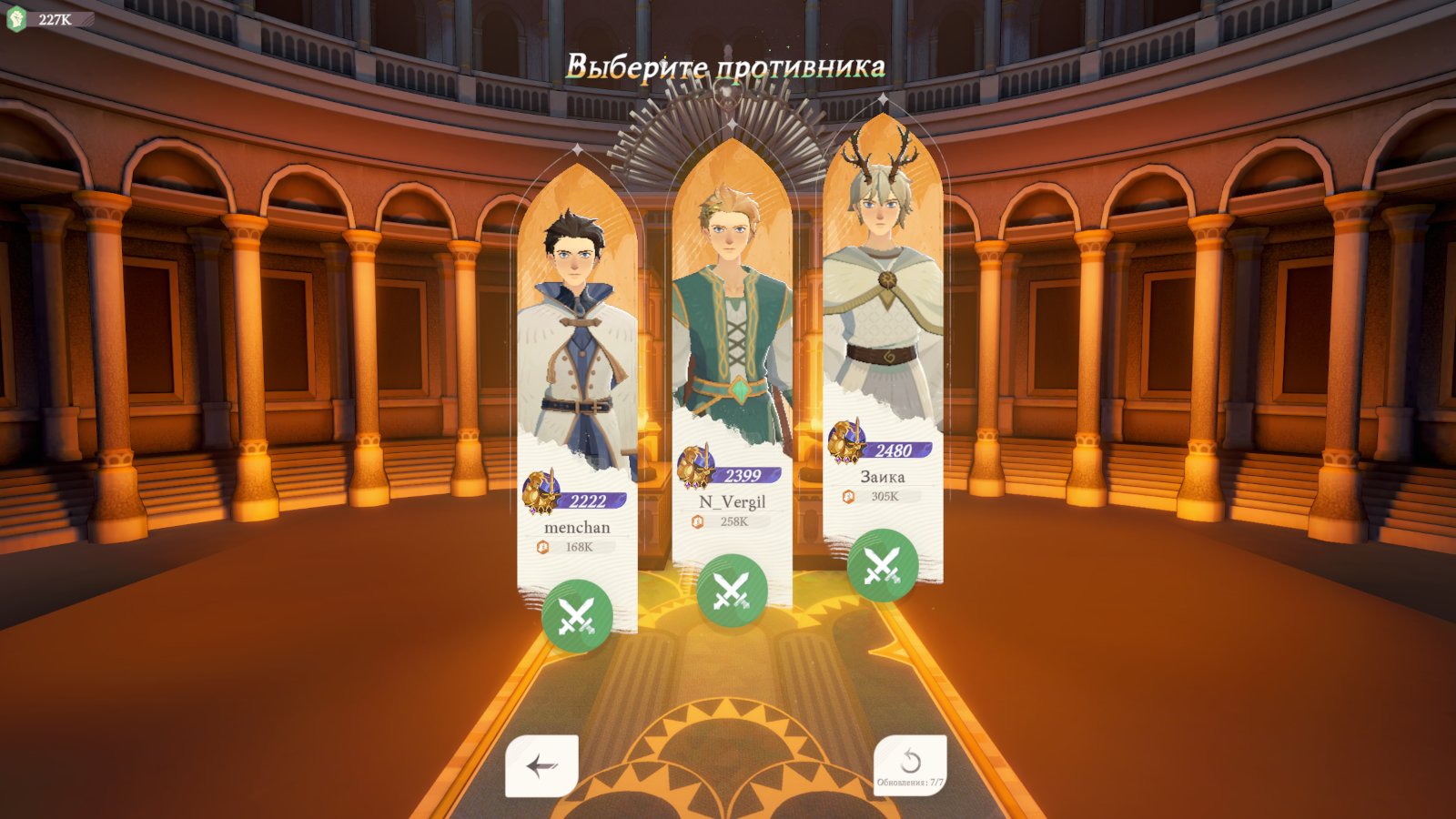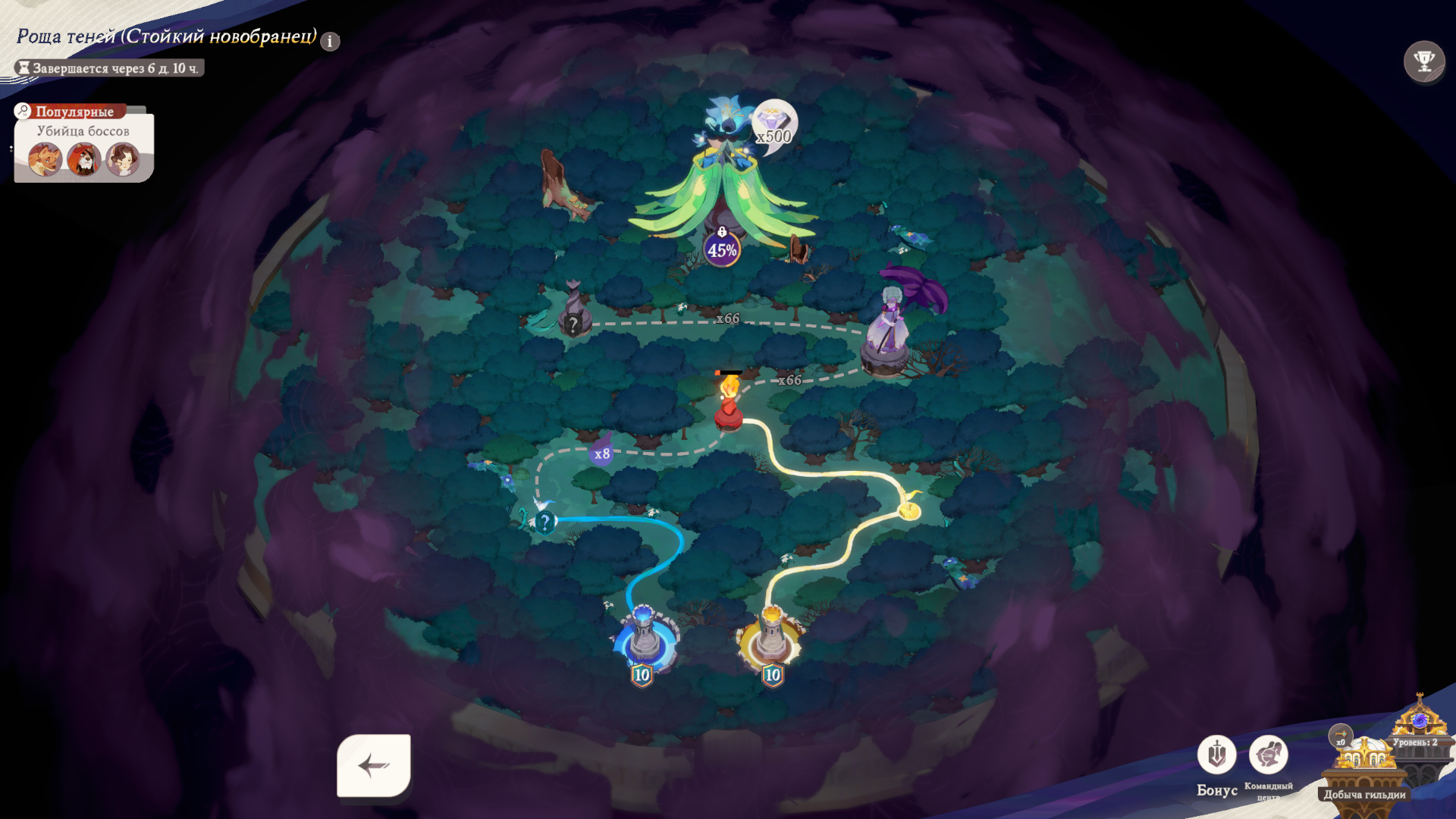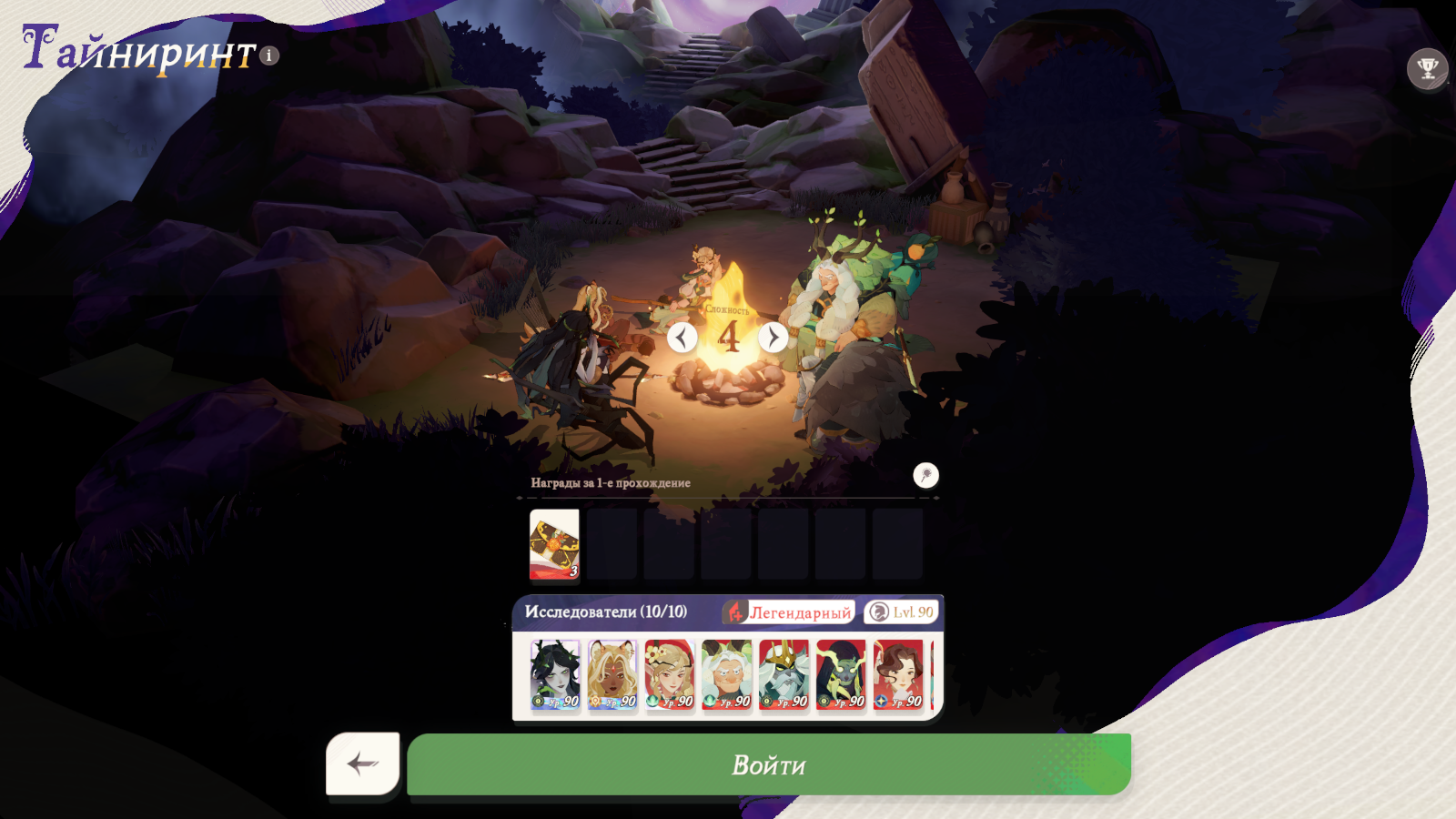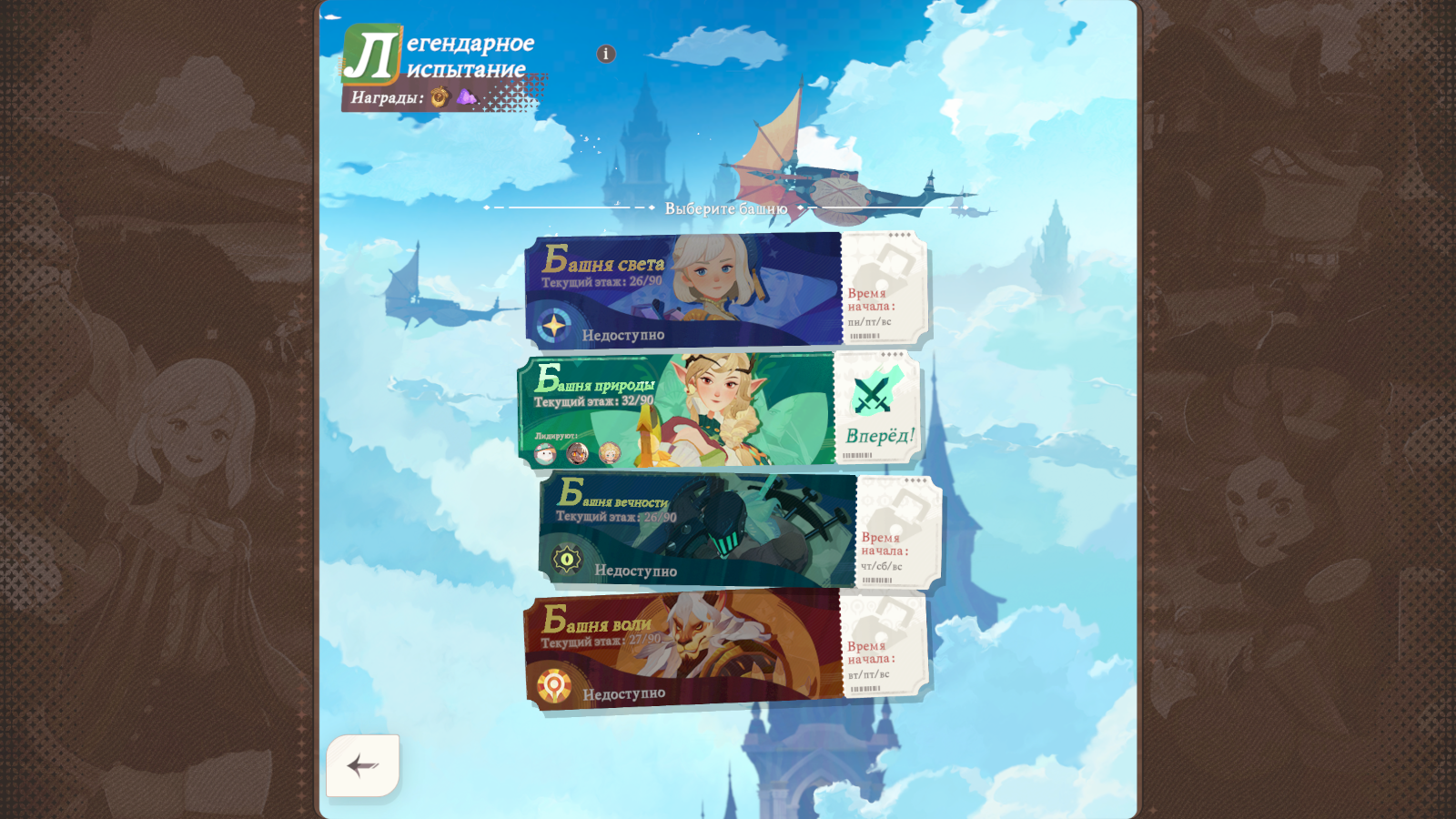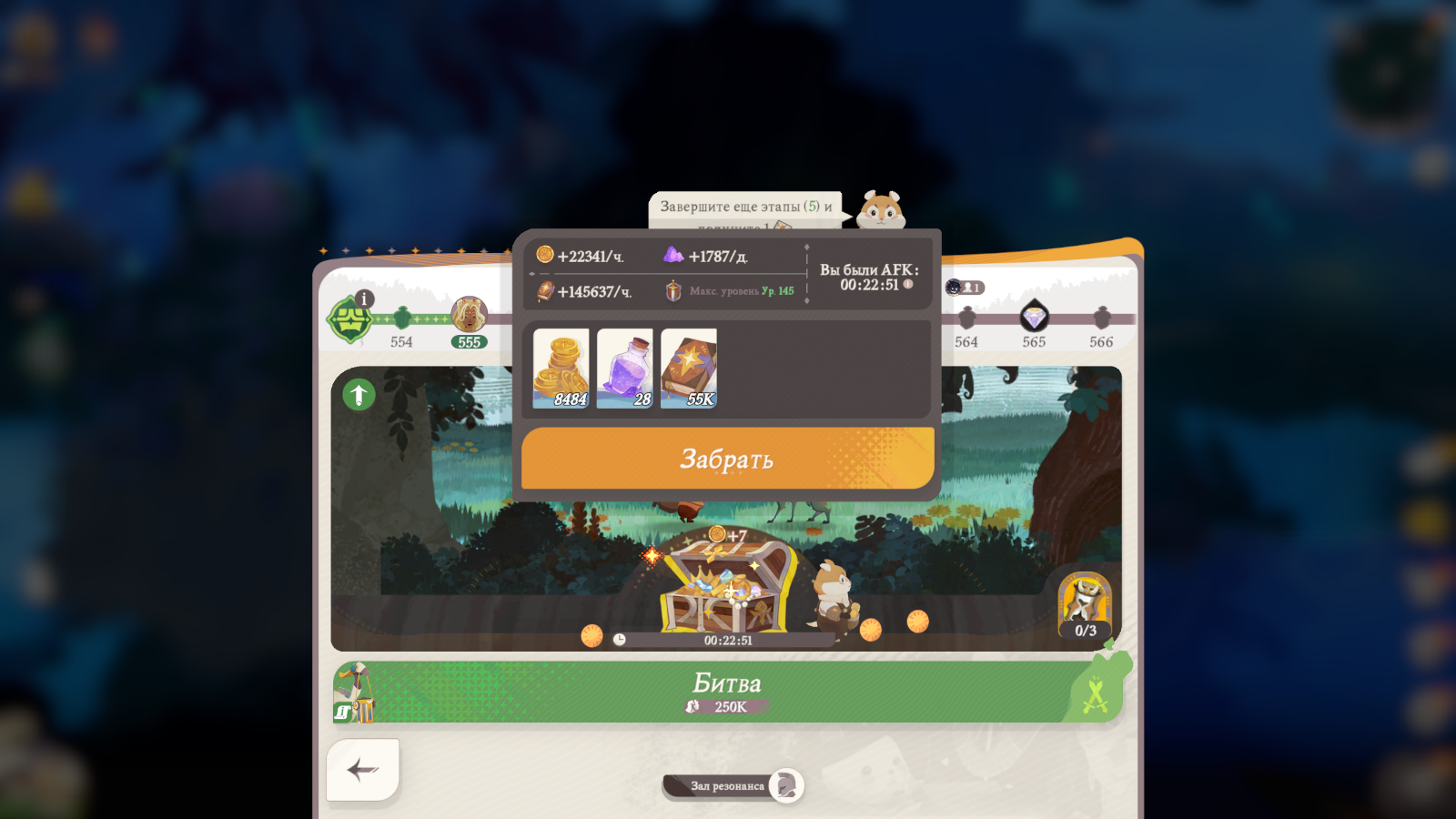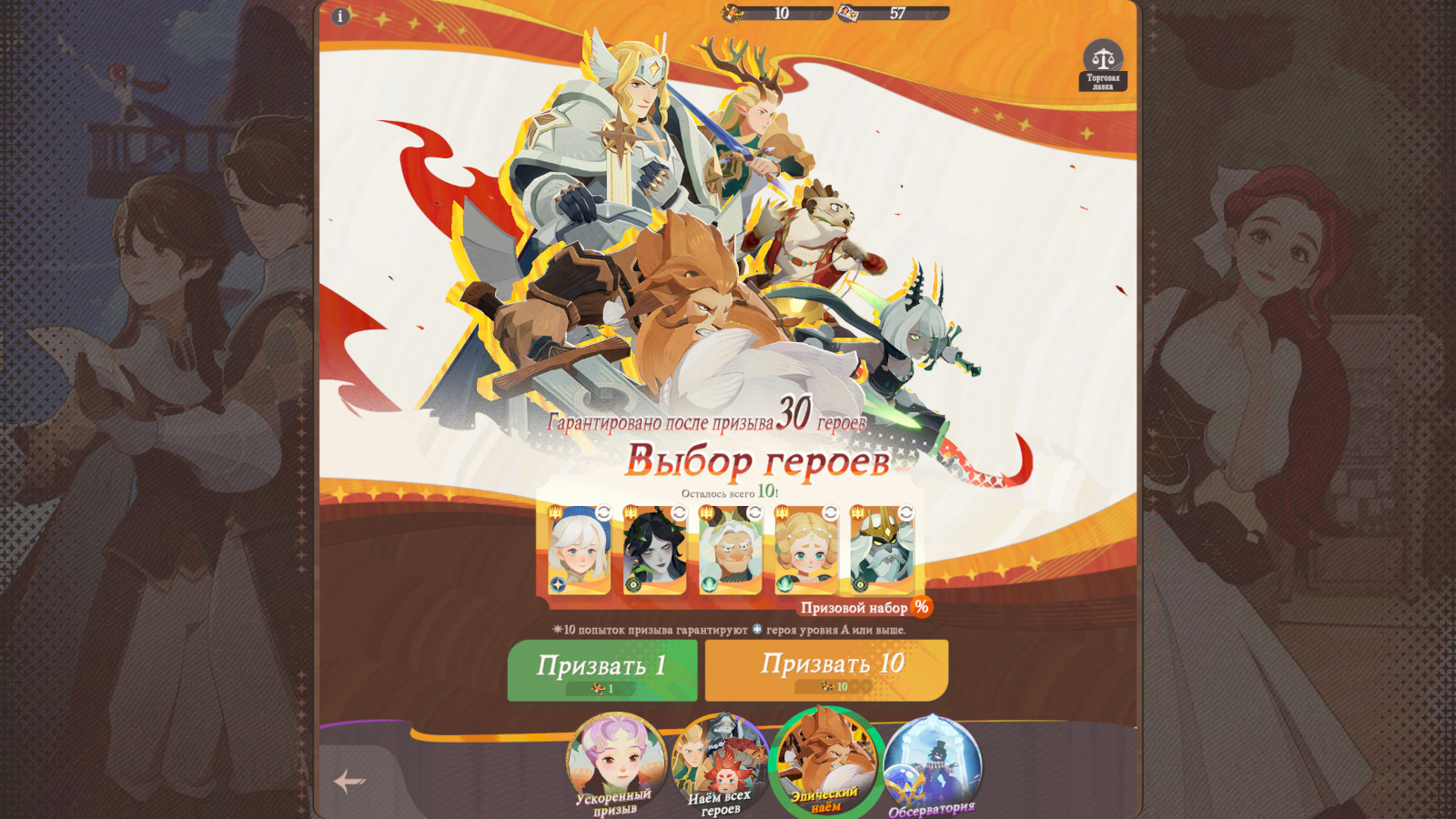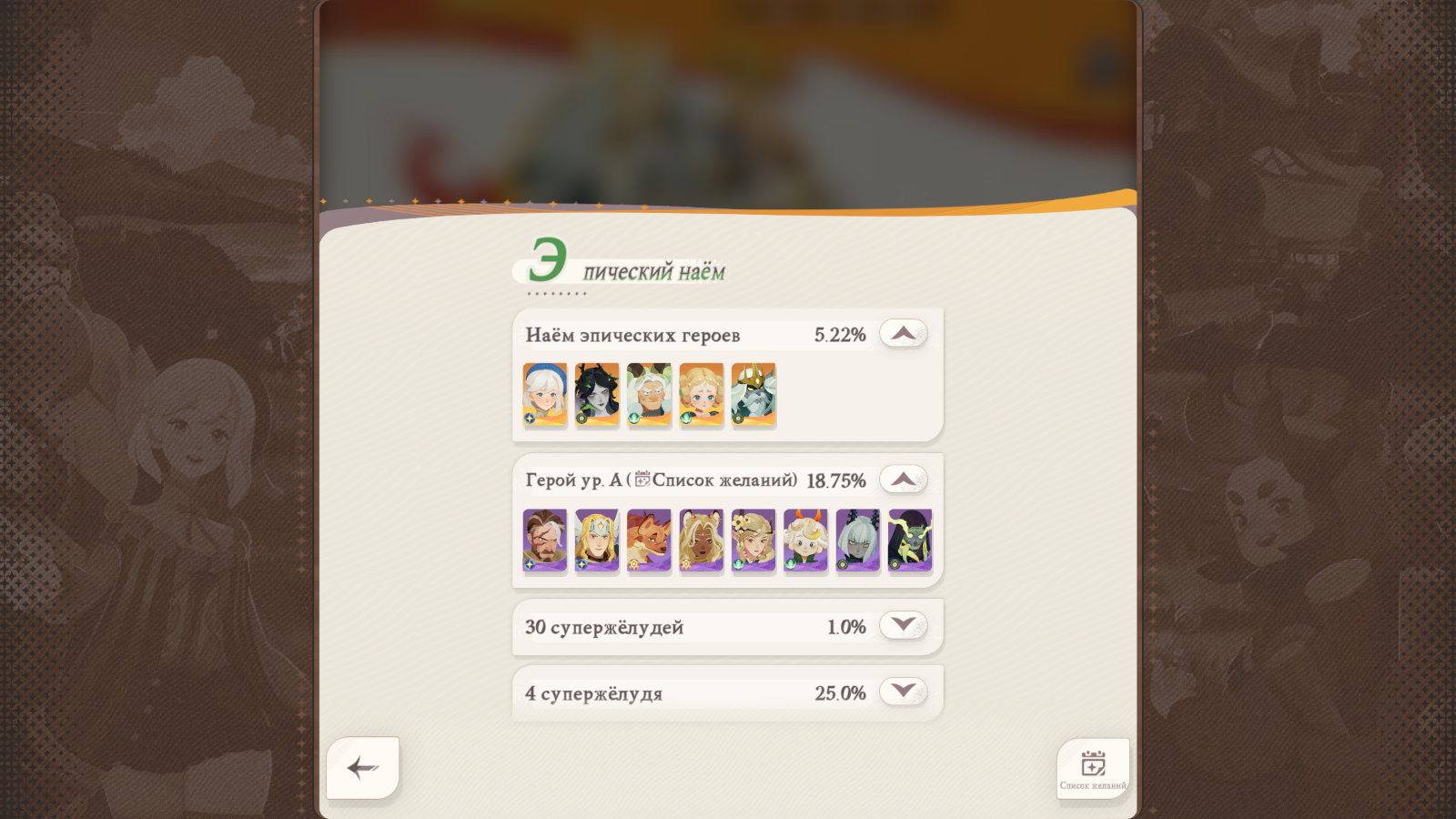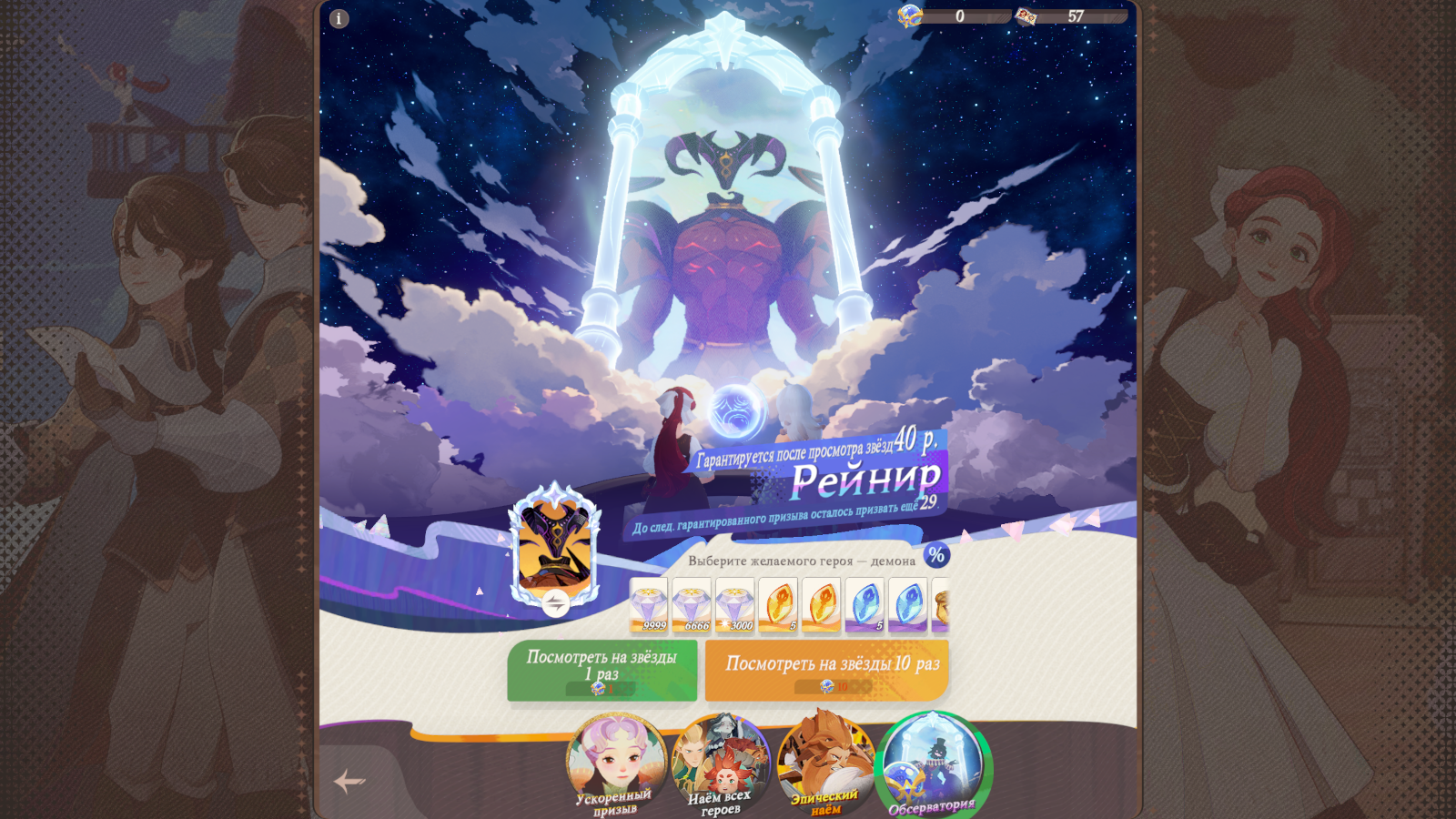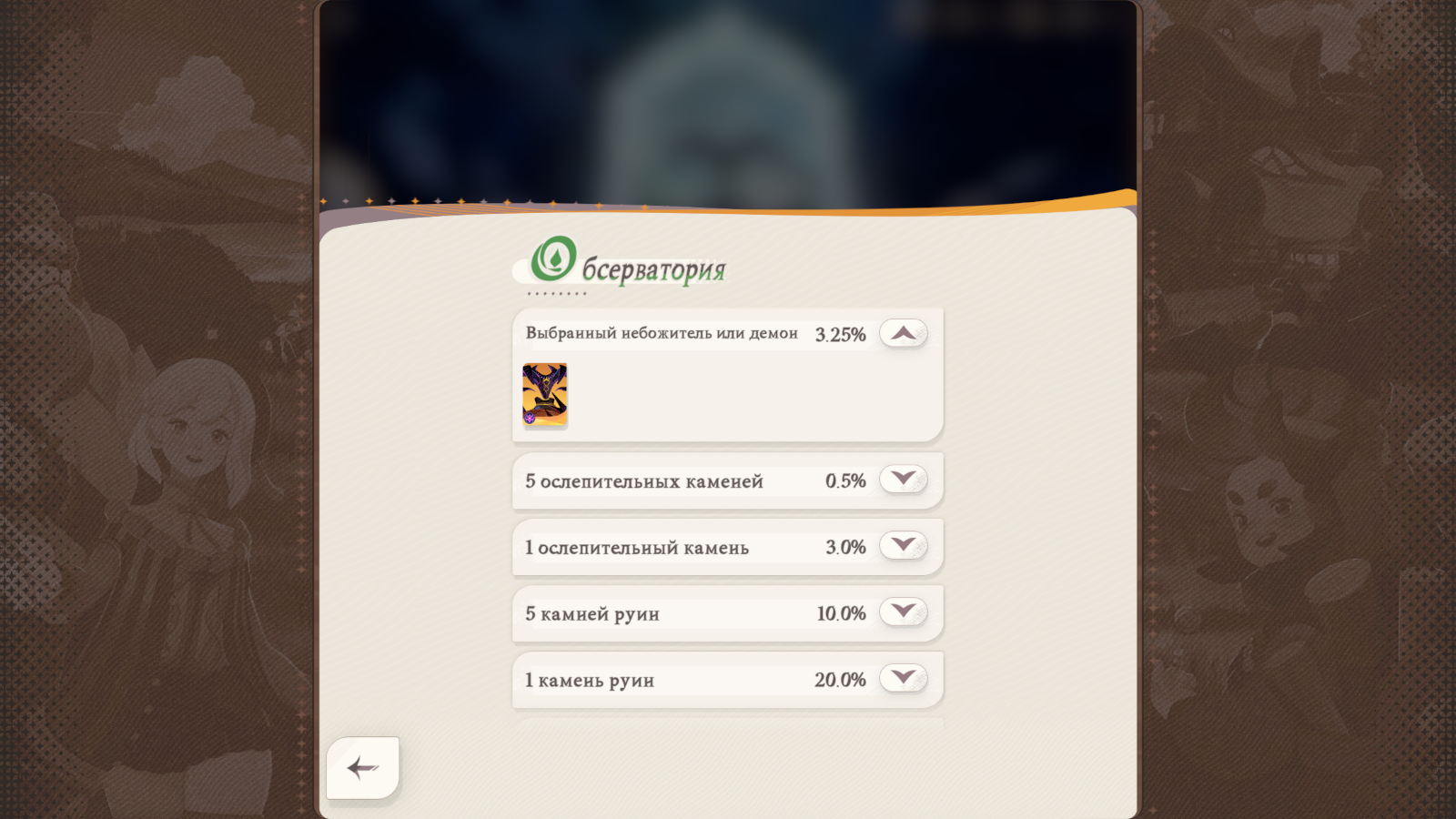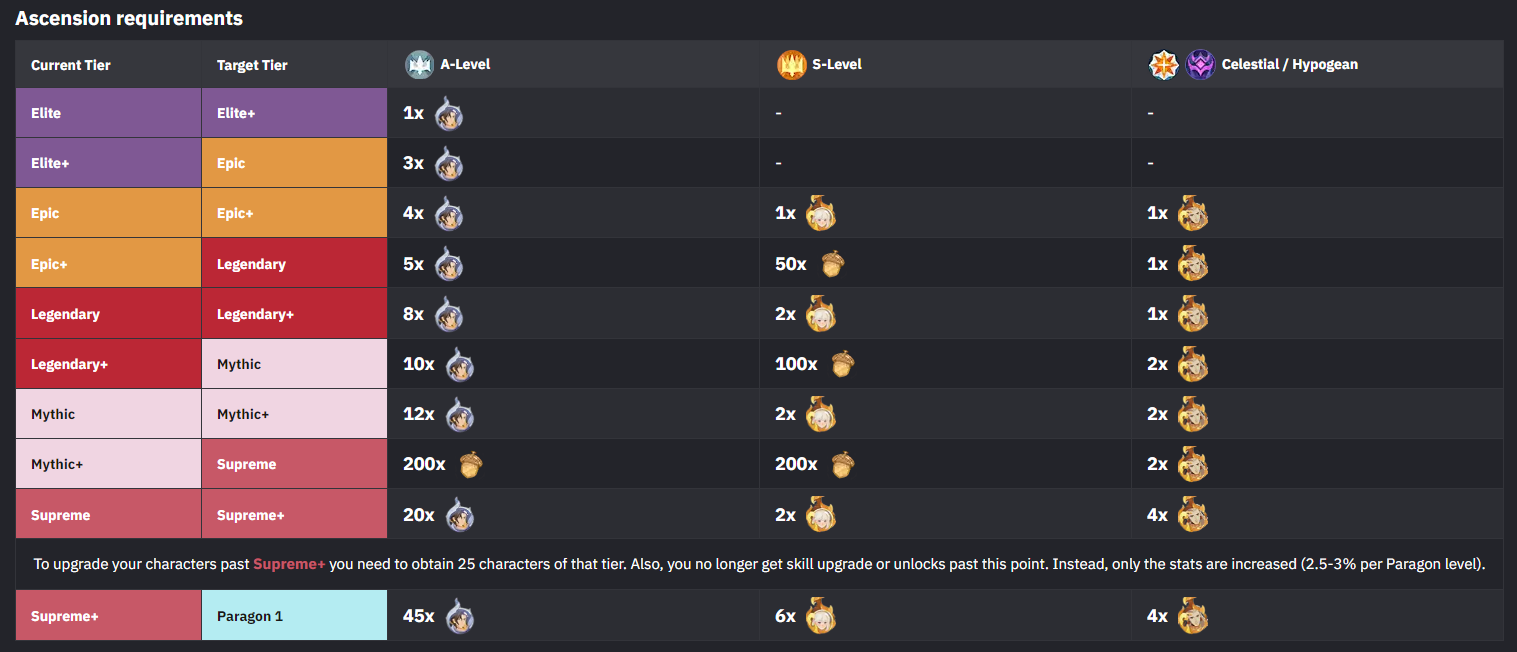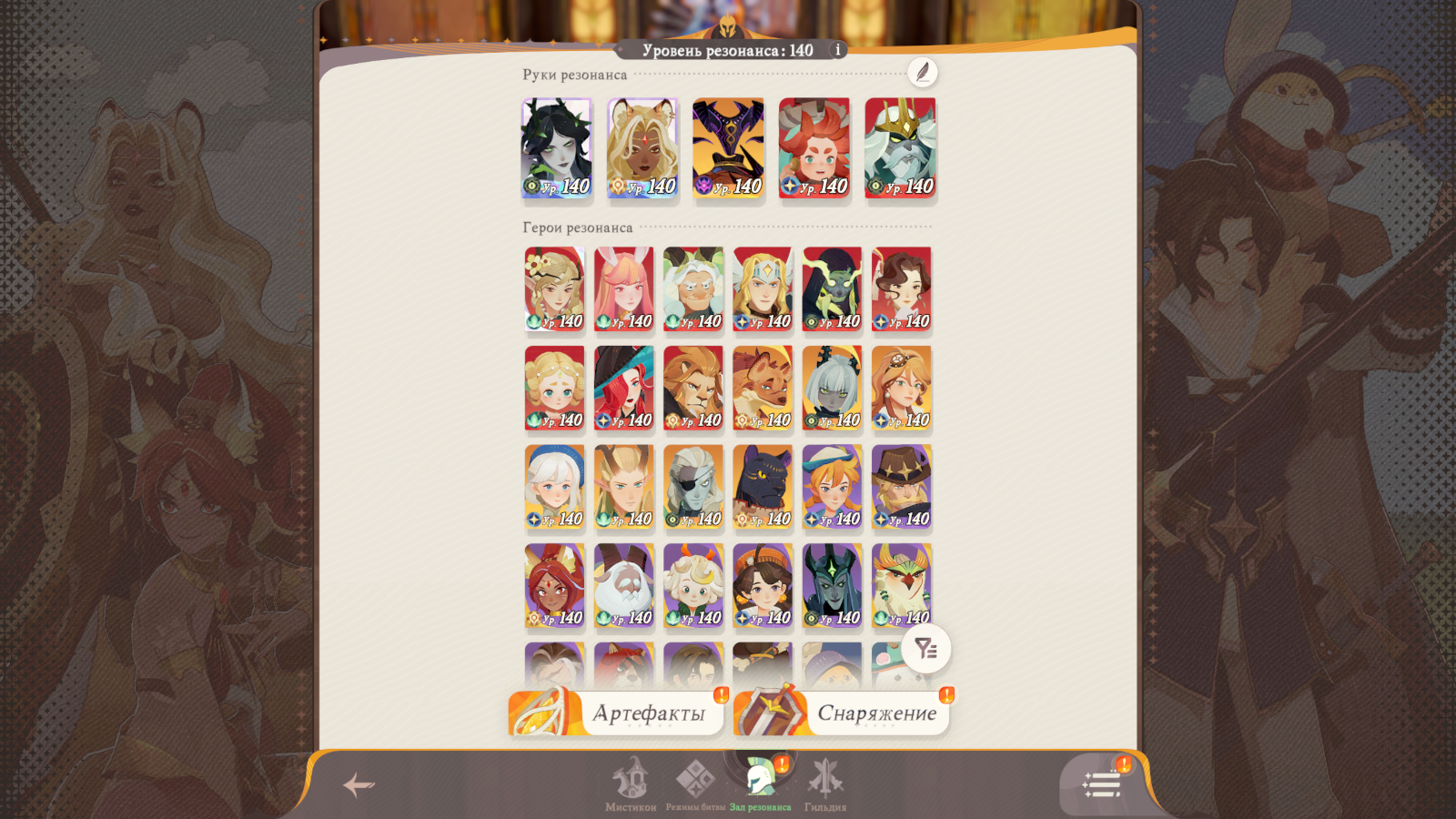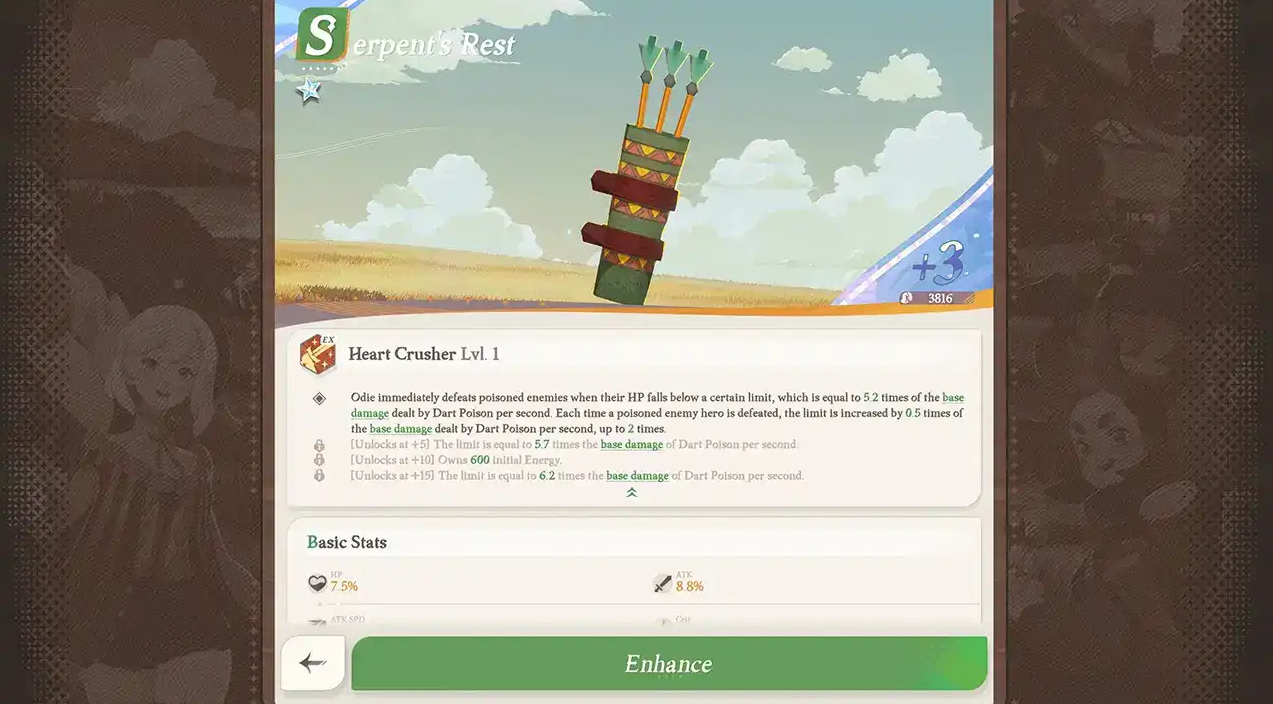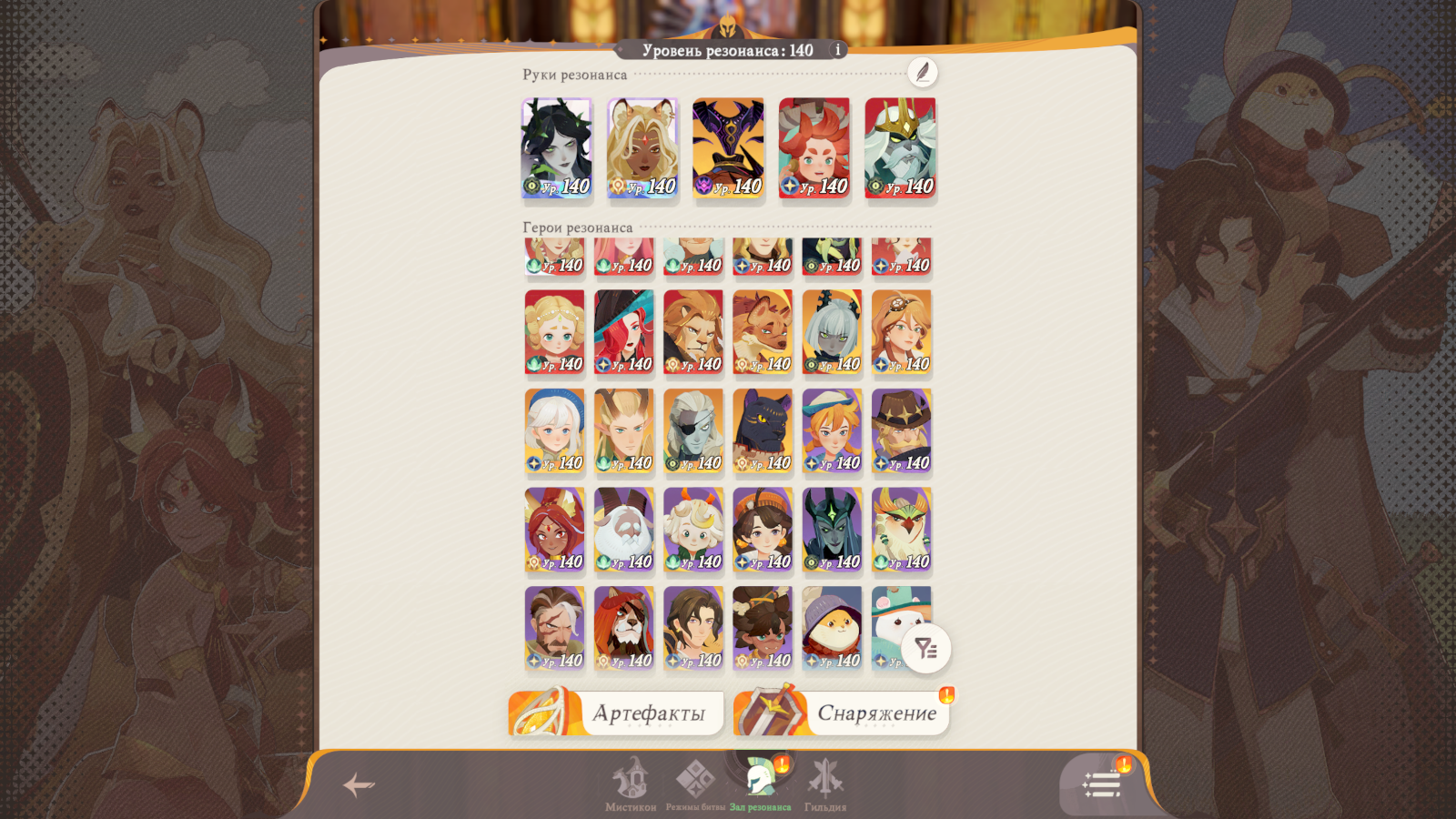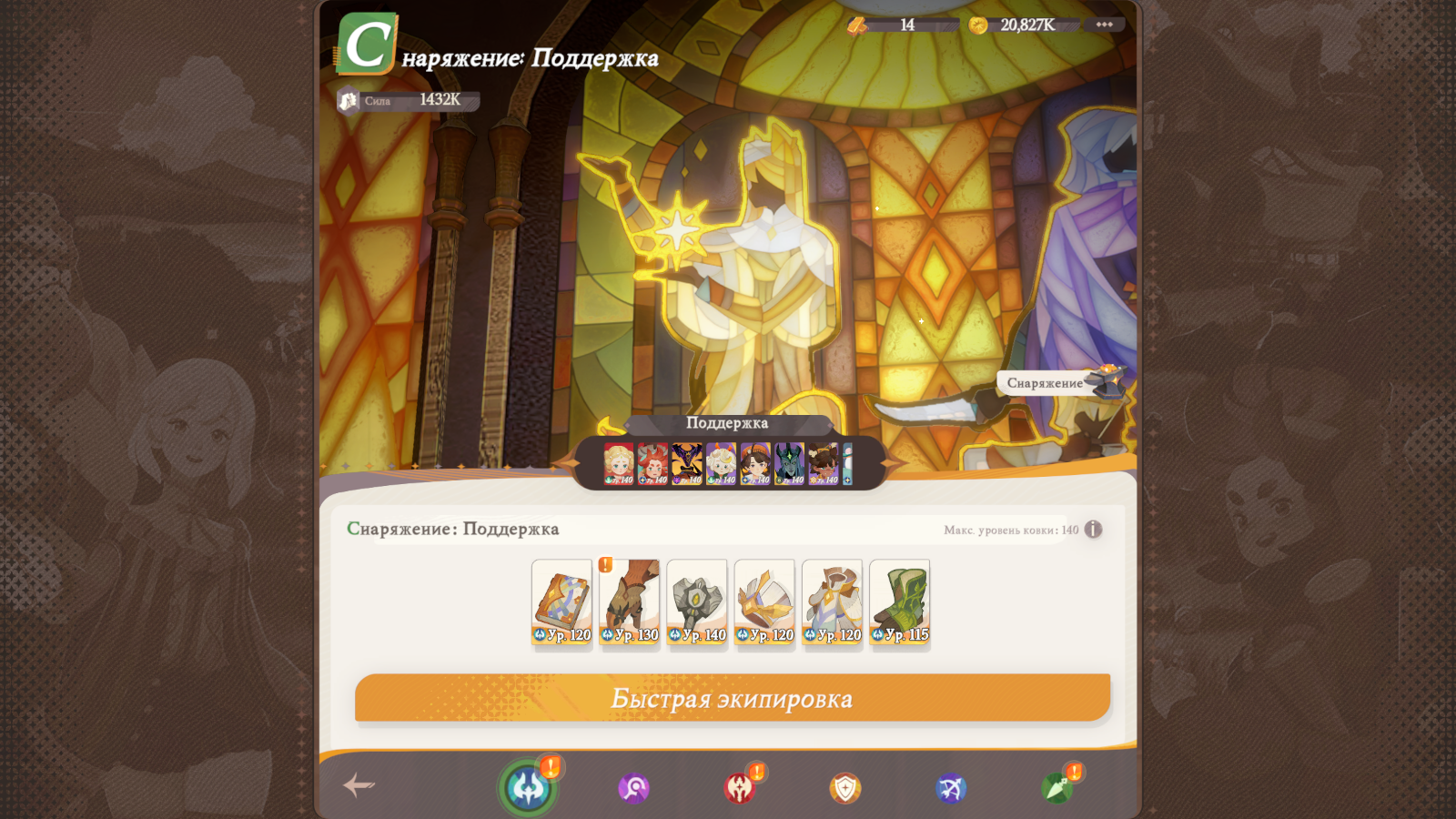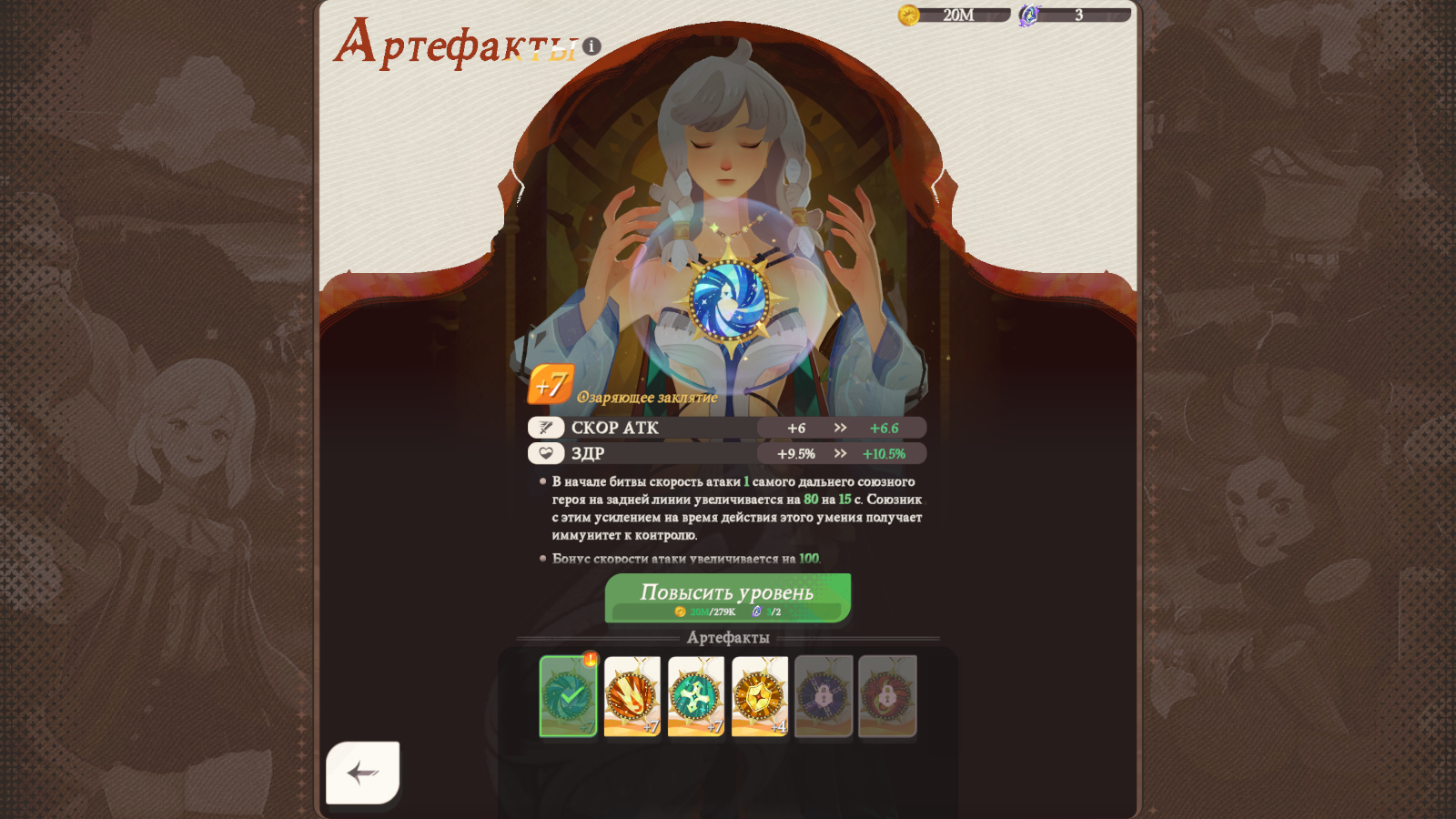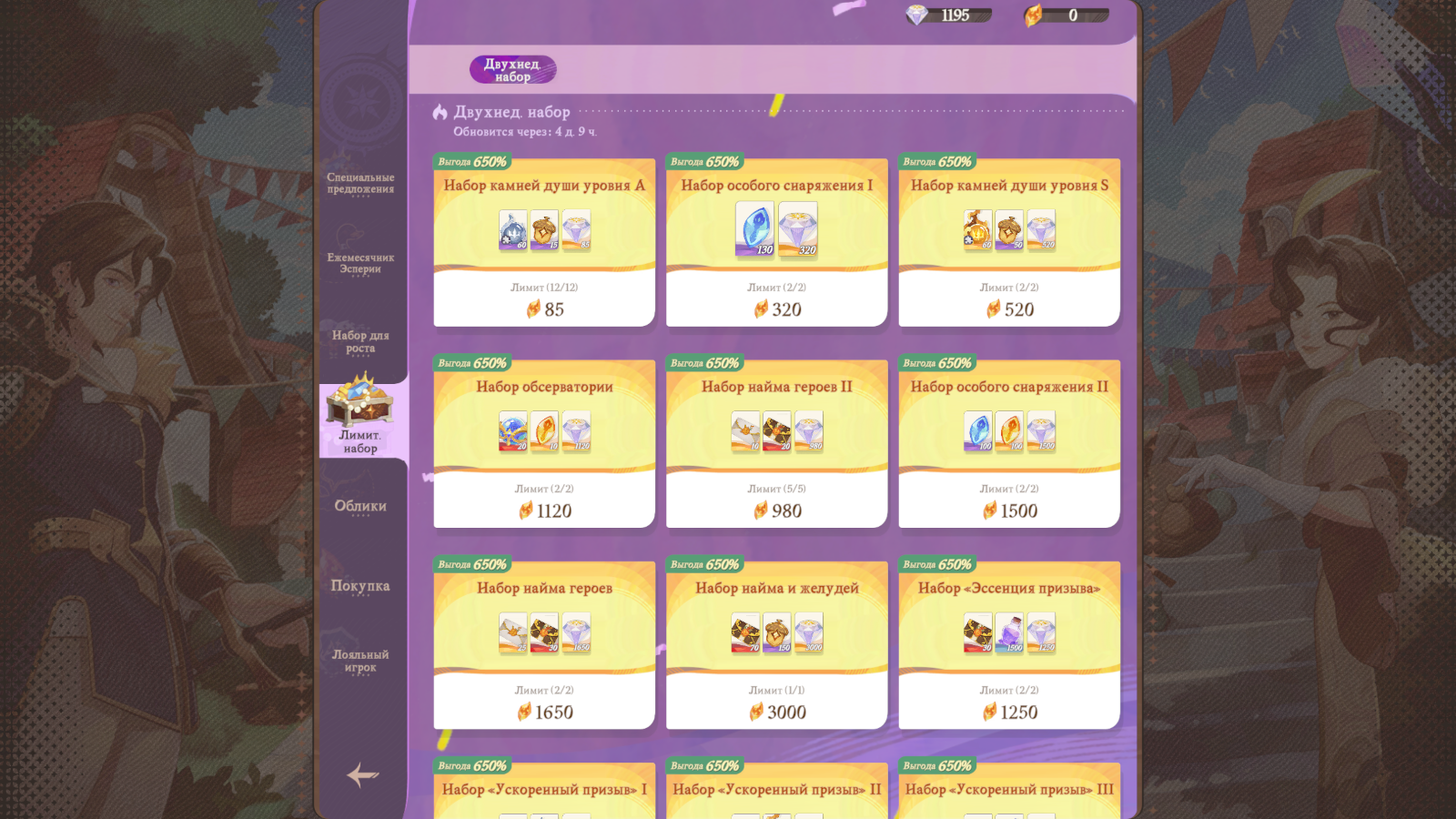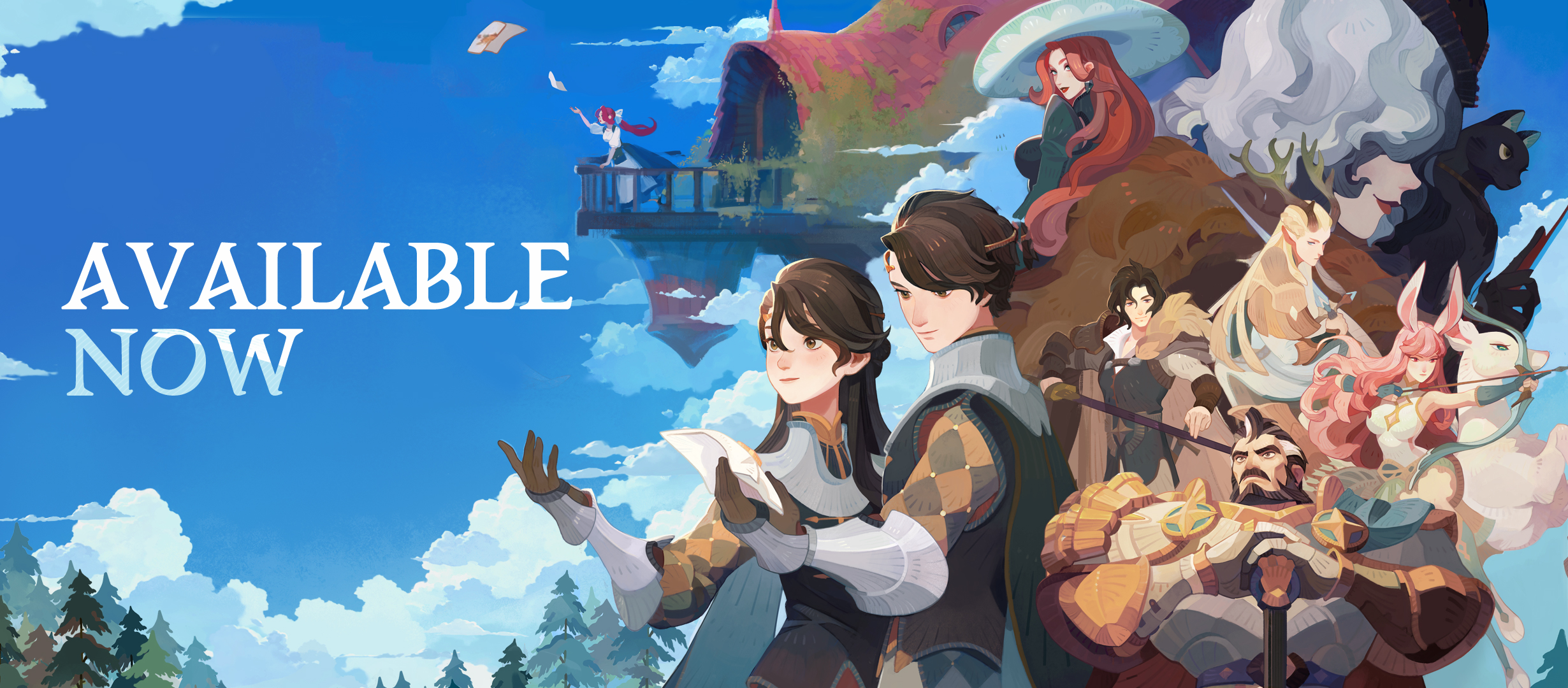Deconstruction of AFK Journey. Is there a new word in mobile battlers?
We analyze in detail one of the main novelties of spring in the mobile games market.
AFK Journey flaunts great art
Cash
- AFK Journey was released on March 27, 2024 on mobile devices and PC (as a separate distribution).
- In the first three weeks of sales, the mobile version of the game earned $16.2 million with 4.7 million downloads.
- By April 17, 2024, the game reached a plateau of 500-700 thousand dollars per day with downloads in the region of 80-100 thousand per day.
- The game was developed by Shanghai Lilith Games. The release is western. AFK Journey has not yet been released in China, Japan, or South Korea.
- AFK Journey is a continuation of the AFK Arena battler, which earned more than $ 1 billion (60% of this amount went to Asian markets).
AFK Journey is one of the most innovative projects in its genre. The game can affect the battles in the way that Soul Clash, which was also developed by Lilith Games, influenced at the time.
Historical background: Heroes Charge, a clone of which can be called almost any modern battler — from Hero Wars to Raid: Shadows Legend — was based on the mechanics, code and art of Soul Clash.
Soul Clash and Heroes Charge, someone is a copy here, and someone is an inimitable original
About the game
AFK Journey is a free—to-play role-playing game for mobile devices and PC in a fantasy setting.
In most aspects, AFK Journey is a classic battler with idle mechanics, gacha and lots of progressions.
If you are not familiar with the genre, then the essence of any battler usually boils down to the following:
- The player has a squad of heroes;
- This squad takes part in automatic battles, earns resources;
- with the collected resources, the player improves the characters, which allows you to move further through the game.
The basic loop in any buttler
This basic loop is also valid for AFK Journey. But, as you know, the devil is in the details.
Key USP AFK Journey
A small remark for those who have not played enough battles: one of the main screens in such games is the hub. As a rule, this is a picture of a city, the buildings in which represent the game modes.
Hub in Hero Wars
The plot in such games is a formality. It most often boils down to simple cut scenes in which characters communicate in short lines in clouds.
AFK Journey has moved away from this practice. There is no hub in it (it has gone completely into the interface). Instead, there is a giant open world with a large number of bright characters, NPCs, quests, points of interest and a well—developed plot.
AFK Journey is hard to mistake for a battler
Important clarification: AFK Journey is not the first battler in which a large world appears to explore. The laurels of the pioneer, rather, belong to Dragonheir: Silent Gods, which was released in the fall of 2023. However, the world map with the movement of heroes along it was perceived there as a formality, relevant more for the first hours of the game than an important gameplay component.
Dragonheir: Silent Gods — similar mechanics, different feel
The uniqueness of AFK Journey lies in the fact that, while remaining a classic battler, it has acquired additional depth and a new scale. The game can be positioned as an isometric Genshin Impact.
Let's figure out how she did it.
Cor-loop
I already mentioned a little above that the core loop of the game is slightly different from the core loops of the battlers. In the case of AFK Journey, it can be reduced to six positions.
Let's focus on each one.
- Battles are the main game mechanics. Depending on the mode, the reward (resources) for victories / participation in battles changes.
- Wins in game modes allow you to progress in the appropriate modes. Resources are given for progress. In addition, progress in some modes affects the operation of idle mechanics.
- Idle mechanics is one of the constant sources for the three most used resources for pumping, which accumulate over time without the participation of the player.
- Resources and consumables are entities that are spent on various squad reinforcements. These can be tickets for gacha, gold for raising the level, and so on.
- Gacha is a slot machine that gives out in exchange for certain types of consumables the opportunity to win a random hero or a resource to upgrade him.
- Leveling — actions that lead to an increase in the roster of heroes. There are only five types of leveling in the game, which collectively involve about two dozen different resources and consumables.
Now the question for attentive readers is: where is the innovation hidden here, why is it not in the core loop, which is easily confused with the core loop of any other buttler?
Innovation
The fact is that the innovation, despite its significance, formed an add-on to the basic loop as one of the modes.
If she is excluded from the game, the loop will remain the same. Just like if you remove the PvP mode or any other. The main thing is that there should be one that allows you to progress along it.
Now let's analyze each of the positions of the lens in detail.
Battles
Visually, it may seem that the fights are not far away from similar ones in Souls or Summoners War: Sky Arena.
Fighting in Souls and Summoners War: Sky Arena
This is partly true. But according to the dynamics, the behavior of heroes on the battlefield, the unpredictability of what is happening — the game is perceived more like Auto Chess.
Chess Rush, one of the clones of Auto Chess
Any fight in AFK Journey can be divided into two stages.
In the first, the player places five heroes on the field (most battles are just five—on-five fights).
Stages of the battle
The outcome depends on the arrangement. If you put magicians in the first line or do not provide protection for shooters, then they can be destroyed in the first seconds of the battle. Before the battle, the game allows you to see who the opponents will attack first.
First you need to arrange the characters
It is equally important to take into account the specializations of the characters. Without a support hero who raises health, as well as without a tank acting as a sponge for damage, the squad will not be able to cope with a worthy opponent.
Rowan is a support hero, it can be difficult to fight without him
The second stage is the battle itself, which occurs automatically (the player can activate the special skills of the heroes, but it is better to entrust it to the AI immediately).
The battle
Any fight lasts 90 seconds. If it doesn't end in that time, the game (presumably) He looks at who has the advantage on the field. There are draws.
It happens, but very rarely
It is possible to double the time of the battle.
During the battle, the heroes behave on the field in accordance with prescribed patterns. There are those who can move immediately to the rear of the enemy, others — in case of damage, teleport as far away from the enemy as possible, others — put a shield on the hero who is in front of the squad, and so on.
One of the cool features of the game is two types of descriptions of the abilities of the characters. One is for those who are ready to use the calculator, and the second is for ordinary players
Those who have played Auto Chess should be familiar.
Remark: the activation of a number of abilities of the heroes depends, among other things, on how they moved onto the field, and some of the most unpleasant opponents are those who constantly jump from one corner of the field to another, getting out from under attack.
Over time, it becomes more and more important for the player to understand the characters and their skills. Of course, leveling plays a fundamental role, but a team assembled taking into account the weaknesses of the enemy can destroy a squad 12-14 levels above it.
Remark: one of the features of the game is how well what is happening on the field is read, despite the real time. At every moment of time, you can see who is attacking whom, what effect is under, what spell has been cast.
Real-time, along with a large number of variables and good readability of the field, made watching battles an interesting activity. There is nothing like, for example, in Star Wars Galaxy of Heroes, when battles turn into the most boring activity with an initially understandable outcome.
The battles in Star Wars Galaxy of Heroes quickly start to get boring
Unfortunately, there are no complete formulas in the public domain, but there is enough mathematics without that. For example, as in any battler, there are factions in the game. This should also be taken into account when playing AFK Journey, because:
- the number of heroes of one faction in the squad depends on the boost in the amount of health of the squad (the presence of 3/4/5 heroes from one faction gives an increase of 10/18/22% to health). But this does not mean that it is worth assembling a squad, solely with an eye on the faction. As they write in one of the game guides, "in most factions there are no five characters who would complement each other well, who would have synergy. In addition, an increase in health cannot compensate for the usefulness of a number of cool characters. Most teams work on the "core", which is a set of three characters from the same faction. Two other characters are added depending on synergy or strength."
- if the damage is inflicted by the hero of the faction that has an advantage over the faction of the attacked, then it increases by 15%, and the reverse attack is 15% less effective.
Speaking of formulas. AFK Journey is one of those games where quite a lot of data is open for analysis. The project demonstrates and, last but not least, explains all 29 characteristics inherent in each character.
If you want to figure out the game, you can do it yourself
For example, there is such a characteristic as "Finishing off". Each finishing unit increases damage to targets with less than 50% health by 1%.
Or here is another very important characteristic — "Skill". If the skill level of the attacker is less than the skill level of the attacked, then the effectiveness of his effects is greatly reduced.
Even if the hero's level is higher, he is unlikely to stand up against a hero whose skill is greater.
Remark: at the end of the battle, the game also allows you to get acquainted with the results of the battle in numbers. In a separate table, the player can see how much damage each participant in the battle has done, how much health has been restored and how much has been extinguished. This, by the way, was also the case in the AFK Arena.
Also note that, in addition to the heroes, the player can also choose an artifact that enhances certain characteristics of the heroes before the battle.
Battles in their current form give the impression that the management of heroes before the battle plays a greater role in success than is customary in the genre.
An important role in this, in addition to balance, was also played by:
- the ability to pre-evaluate the enemy squad;
- good readability of what is happening on the battlefield;
- the fact that the player does not need to upgrade all the characters separately.
An explanation is needed for the latter. The level of the entire roster is tied to the level of the weakest hero in the hand. This made it possible to experiment with various builds without penalties and the need to spend huge amounts.
We'll talk about this in the chapter about the features of pumping, and now let's focus on the progress and modes.
Some more AFK Journey art
Progressions and modes
Like any battler, AFK Journey is a set of progressions. Performing actions within the progression is rewarded with resources and consumables that allow you to upgrade and move on through the game.
Some progressions cover all modes and mechanics at once, some exist only within a particular mode. Some progressions reflect the overall progress in the game, while others are regularly reset.
If battles are a key component of each mode, then progressions monitor the player's activity. Their task is to keep, to give positive emotions, to get hooked on the endorphin needle of encouragement. In addition, they are a tool for balancing resources.
There are many progressions in the game, which I have divided into two pools. The first one is the progressions common to the whole game, and the second ones will be touched upon already as part of the conversation about the modes.
Common progressions:
- "Daily tasks" is a set of simple tasks that are reset once a day;
- "The path of growth" — tasks related to single-player activity (campaign completion, AFK and leveling);
- "Growth tests" — tasks related to any mode can be included here;
- Mysticoteca is one of the key progressions, it records achievements in various modes, rewarding for this, as a rule, with a significant bonus to idle mechanics.
- "All Heroes" is a progression that rewards you for entering the game every day;
- The Path of Glory is a local combat pass, it is quite comprehensive. There are three progressions inside the pass with daily, weekly and one-time tasks. For completing them, the player receives milestone points. For example, I scored 1000 such points and got a level 30 pass, where there are both free rewards and those for which you need to buy a pass.
The player is constantly informed about the completion of a task by means of notes on the buttons of the corresponding progressions. So the player regularly goes to numerous menus to get them.
As for the modes, there are formally eight of them in the game. They are usually opened during the course of the story and progress within the AFK mode. We will focus on them now.
Open World / Story Campaign
The very innovation that distinguishes AFK Journey from a host of similar titles.
In this mode, the player travels in an isometric projection through a vast world divided into conditional zones. Initially, most of the world is closed. The zones open after defeating the guardians of each.
Within each zone, the player is waiting for:
- a portion of the global plot;
- side quests with the main characters of the game and NPCs (the former reveal the characters and the universe better, the latter enliven the locations);
- trivial puzzles (in the spirit of Talos Principle, card games, etc.);
- there are many detachments of opponents, as a rule, guarding chests with consumables;
- scattered consumables.
Most of the activities within the world provide resources and consumables.
The open areas create a single seamless world through which the player can navigate as they wish. This makes sense because, in addition to the main plot, there are also assignments that are not related to the main story, as well as a large number of places for independent research.
Not Assassin's Creed, but there is a place to run
The experience of interacting with this mode is closest to Thronebreaker: The Witcher Tales. The character runs through a detailed world. In the case of plot events, a cut scene is launched or a dialog screen opens, and upon contact with the enemy, the usual combat mode is launched.
Thronebreaker: The Witcher Tales
The plot is unlikely to captivate the sophisticated Disco Elysium or the "Life and Suffering of Mr. Brante" player. Rather, it is a casual version of the original Baldur's Gate with simple, but numerous intrigues, as well as bright, but very much in need of full disclosure characters.
The key problem of the narrative is ludonarrative dissonance. But it was impossible to avoid it, given the nature of the game. The point is that in the player's roster there are often characters who either do not know about each other according to the plot, or are at war with each other at all. Fortunately, this is perceived from the very beginning as an obvious convention.
The "Open World / Story Campaign" mode in AFK Journey does not destroy the loop, on the contrary, it strengthens it, in fact becoming the semantic core of the project. Although his key role is still seen as different.
Key tasks of the regime:
- attracting an audience new to the genre that was not previously interested in battlers;
- attracting an old audience interested in new experiences;
- increase retention and loyalty to the project (the plot is able to intrigue, and the characters may well fall in love with themselves);
- an attempt to enter the territory of plot-based free-play games with little blood, which are now represented, perhaps, only by Genshin Impact and Honkai Honkai: Star Rail.
Progressions in the mode:
- Plot tasks — the main plot;
- side quests are multi—part side quests with the participation of the main plot characters;
- Local Errands — short quests from ordinary NPCs;
- the disclosure of miasma — miasma is called the local equivalent of the "fog of war", by opening a new zone, the player gets rid of the miasma;
- Location progress — in the world of the game, zones are made up of various themed locations with treasure chests scattered around, the progress of the location is determined by how many chests the player has found in a particular location.
Tasks/progressions in this mode are usually rewarded with a small amount of resources and consumables.
AFK
Progress in AFK mode directly affects the amount of resources a player receives within the idle mechanics.
The mode is a series of ever-increasing battles-stages. So far, there are relatively few stages — 1125. In the first two weeks of the daily game, there are about 400 stages without transactions.
Passing each stage in the mode is not rewarded, it only increases the amount of a resource automatically generated per hour. However, every few wins, the player receives a small amount of resources or consumables.
Each leveling of the squad gives a tangible boost within this mode.
The regime can be called one of the most time-consuming and routine. Apparently, for this reason, this is the only mode that has an autoboy feature. After its activation, the battles follow each other completely without the player's participation until the first defeat.
Key tasks of the regime:
- increase the number of daily returns to the game (without them, the player will not receive enough basic supplies);
- demonstrate progress from leveling (minimal improvements due to a very gradual level of difficulty increase immediately affect the results of battles);
- to demonstrate the tact of the game (including due to the gradual increase in complexity, it is in this mode that it is most clearly demonstrated that not only pumping, but also tactics play a major role in the game).
Mode Progressions:
- The mode itself is a progression that affects the effectiveness of idle mechanics;
- "Straight Path" — rewards for passing the AFK stages. The main prize of the progression, updated once a month, is a thing for the main character.
The Kingdom of Dreams
Fast battle mode with giant monsters. Here, the player is confronted not by endless detachments of opponents, but by a single monster that changes every day.
Every day, the player is given six attempts to defeat the monster. There can be up to ten times more attempts, they can be bought for gold. This makes sense, because, as in the case of other battles, there is a field for tactical experiments.
Monsters have different types of difficulty. After killing a monster on one difficulty, the player is immediately invited to fight with him, but on a more difficult one (the difficulty is not reset, when you reach a difficult monster, you will meet with a difficult one the next day).
Winning one difficulty level unlocks the next one. And so on until the endless mode opens, where the monster stops dying, and the key goal becomes simply to inflict maximum damage on it.
Dealing damage to monsters — regardless of whether the player has reached the endless mode or not — determines the player's position in the overall daily updated rating on the server.
There are four bosses in total, which alternate between each other. One day the player confronts one monster, the next — another. And so on in a circle.
In total, the mode offers two types of rewards:
- rewards for fighting a monster (killed a monster on a specific difficulty — received 100% of the rewards, took off only a third of the health, received only 30% of the rewards, and so on);
- the final awards for the day for a place in the ranking.
The mode is important because only within it the player can regularly farm two resources:
- the essence of the tide, necessary for high-level leveling of heroes;
- Dream fragments for which the player can buy soul seals without gachi (heroes without using gachi).
In the first week or two, this mode is visited, rather, for show, to get basic resources and daily game rewards, but with the appearance of pumped rare heroes in the roster, requiring both essence and a large number of seals to pump, the attitude towards it changes.
It is important that by the time the player begins to understand the real value of the mode, he has most likely already managed to use the resources that the "Kingdom of Dreams" provides a couple of times. Therefore, there is no feeling of a paywall.
Key tasks of the regime:
- Player return (retention as a whole is a key task of each mode, as well as progressions);
- increasing monetization:
- through the rating (the presence of four regularly reset player ratings — by rating per monster — on which an exceptional reward depends, may well become a funnel for players chasing high positions);
- through working with players who are not ready to invest in gacha (the essence of the tide, sometimes necessary to rock heroes of high rarity, is given in very limited quantities within the regime, but with a relatively inexpensive transaction, they are poured with excess — this is understandable, small, but at the same time a constant investment).
Mode Progressions:
- progress in difficulty — for every 10% of the health that the player removes from the monster of the day, there is a small reward;
- progress in the rating — the more health was removed from the monster, the higher the place in the rating, the latter determines the number of rare consumables issued at the end of the day.
Duel of Honor
Synchronous PvP mode. The results in it depend solely on how well the player has dealt with the strengths and weaknesses of the characters.
The mode is arranged as follows:
- A limited number of attempts are given each day, but they can be purchased;
- upon entering the mode, the player is given a batch of heroes of the first rank and a small amount of local currency — badges of honor, on which the player can buy additional heroes and equipment for them in the shop of the mode;
- the player takes part in dueling battles with other players (the game in this mode is played in real time);
- the key difference between the battles in this mode is that before each of them, the players do not immediately, but take turns (and for a limited time) putting their heroes in the arena;
- after each duel, the player receives badges of honor, which he spends on new heroes, their upgrade (several cards of one hero give a higher-ranked version of this hero) and equipment;
- Victory in the player mode is awarded only in the case of nine wins;
- in case of three defeats, the player is kicked out of the mode — you need to start it from scratch.
There is no reward for winning in the mode. Only the player's rating on the server is raised.
Given that leveling ranks within the main game progression is very slow, the "Duel of Honor" is the only way to actually get to know them in the first weeks of the game.
The mode is essentially a game within a game. He is isolated from the game as much as possible. Neither the level of your leveling in the game, nor the amount of money spent on progress, does not affect this mode. There is an internal currency that does not affect the core loop, here the heroes have their own pumping, reset after each session, here there is a different logic of working with objects.
As with the story campaign, this mode can be excluded from the loop without consequences. At the same time, it has a high entry threshold relative to other modes (many new rules), it is quite frustrating (high error price and high requirements for game skill) and it is not monetized (the entry price is low).
Key tasks of the regime:
- increasing the length of the session (each entry into the mode easily eats up 30-40 minutes of pure time);
- educational (the mode is a great tool for experimenting with heroes that the player does not work with because of their low rank in the main game or even because they are not in his roster, plus it offers working builds that the player may not be aware of);
- increased engagement (you easily get hooked on the mode and react more emotionally to the results in it, because you understand that skill comes first here, although luck also plays a role, since there are not always suitable cards in his store);
- retention of non-paying players (this is an ideal mode for non-paying players and those who have difficulty progressing: the game allows you to play and have fun, including those who do not spend money in it).
Progressions:
- the game takes into account the number of wins within the mode and awards them with resources and consumables, each week this progression is reset to zero;
- "Experienced Duelist" is another progression that rewards for daily activity in the mode, awards gold, regular invitations (tickets for gacha) and skins for the main character.
Arena
Asynchronous PvP mode. The player meets with units of heroes that were previously exposed by other players, and not directly during the battle, as in duels.
The mode itself represents a progression divided into many ranks.
Winning asynchronous battles with other players earns points. The more points, the higher the rank. With defeats, progress and ranks are lost.
Also, victories bring resources, but in small quantities, the main thing here is ranks.
The higher the rank, the greater the daily and weekly rewards of the mode. It is the coins of the arena, for which you can buy seals of sleep in the game store. Sleep seals are consumables that allow you to summon specific rare heroes without gacha.
Sleep seals can only be bought with arena coins, and they can only be obtained in the arena itself (you can't buy them for money either).
You can participate in only three or four battles for free every day. Further, for each battle, the player will have to pay more and more diamonds, a relatively rare game consumables, which can also be spent on gacha.
You cannot buy unlimited permission to participate in battles. The daily limit is around five to six purchases.
One of the curious features of the mode is the ability to choose an opponent for a PvP match based on his level of power (a cumulative metric that approximately displays the level of pumping). If there are no suitable people in the sample, you can transfer it up to six times.
The mode can be easily removed from the loop if desired. Although it is much better embedded in it than the same "Duel of Honor". Plus, it is the source of such an important resource as sleep printing.
Key tasks of the regime:
- monetization and involvement of paying players (if in synchronous PvP players competed in skills, then the pumping competition comes out on top, which means a wallet);
- retention of a non-paying audience (daily participation in the mode makes it possible to rock rare heroes without gacha).
Progressions:
- ranks;
- rewards for victory — a pool of rewards reset once a week for the number of completed victories, awards arena coins.
Fighting Games
This is the combat mechanics of guild mode. This mode is the most complex in terms of rules and nuances. I'll try to tell you about it as simply as possible.
Upon joining the guild, the player gets the opportunity to participate in combat games.
Combat games take place in separate locations consisting of passageways, fortresses and bosses.
Each of the locations is guarded by an enemy squad. It is possible to destroy each one only by a series of attacks from several guild members, because:
- Any opponent has a lot of health here;
- a limited number of heroes can participate from each player (it grows over time, but they won't let you use the entire roster anyway);
- for each battle, the heroes spend stamina, which is restored a day.
So it turns out that at first you can only enter combat games for one or two battles per day.
Daily participation in combat games is rewarded with gold (this is one of the main resources spent on raising the levels of heroes). Moreover, the daily amounts of gold that a player receives in this mode can be 4-6 times more than those that he earns with idle mechanics.
Locations are completed during the week.
At first, you can ignore the mode, but as soon as the heroes of the squad begin to get closer to level 100, there will be a great need for gold, which cannot be closed without daily visits to the guild.
Key tasks of the regime:
- high-level leveling balance (other modes and progressions, although they regularly give gold, but in volumes that are insufficient for mid-game);
- retention and involvement of hardcore players playing similar games by long-established groups and communities;
- Encouraging hardcore players who have come for their community to spend more time in the game through challenges, one of the mode progressions.
Progressions:
- Challenges are the key progression of the mode, awards guild members for playing other modes with medals (you can buy four of the rarest and most powerful heroes in the game with guild medals);
- the progression of the combat mode (reflects the progress of defeating monsters in the location, divided into four types of difficulty, the last one is endless);
- Treasure for Reputation — a progression that rewards activity in combat mode (gives gold, consumables and keys that open chests of valor with random rewards);
- Treasure chests (these are objects separate from valor chests), which are awarded once a week to guild members based on their activity.
In addition, there are more than a dozen different ratings in the mode.
Tainirint
Bagel mode. The player's squad is sent to a maze consisting of 15 rooms. There is a rival in every room.
After the battle in this mode, the heroes do not restore their health, and after death they do not revive. So if you lose in any of the rooms, the player is forced to start the passage of the maze from the beginning.
The death rate of the squad is compensated by the mechanics of relics and coats of arms. Passing through the rooms, the player pumps relics and has a chance to receive coats of arms. Both the first and the second give a significant boost to the squad.
Also, during the battles, the player collects the currency used only in this mode — pure crystals, which can be spent again exclusively within the bagel.
The mazes are divided into 15 difficulties. Completing the maze for the first time on any of the difficulties is rewarded with a small number of epic invitations (tickets for gacha with a high probability of issuance).
After completing all the difficulties, the endless mode with a boss with infinite health turns on. The damage on it determines the place in the rating of the mode, which is reset once a week.
The mode is minimally connected to the loop. He ignores the levels of the heroes, takes into account only the ranks, and his rewards for passing are significant, but one-time. Based on this, it is not entirely clear what kind of task he is solving.
By the way, there was a similar mode in the AFK Arena, but there it was reset to zero every 48 hours and worked on hold. But here it seems like it can be completely ignored.
Progressions:
- the passage of difficulties.
The legendary test
This mode is one of the most logically integrated into the loop.
In this mode, the battles take place in four towers. One tower per faction (there are four key ones: necromancers, goons, light bearers and forest dwellers).
Each tower is open only on certain days of the week. For example, the tower of light carriers is only on Mondays, Fridays and Sundays.
The towers themselves are divided into floors (one battle is one floor). The passage of each floor is rewarded with consumables (as a rule, nuts necessary for pumping high-level heroes).
You can only fight in the faction tower with the heroes of the corresponding faction. Considering that in other modes, as a rule, the player collects squads of heroes from several factions, this forces the player to regularly review his tactics and pump up those whom he previously neglected.
Key tasks of the regime:
- support for the magnifier;
- improved monetization/increased engagement (forcing the player to upgrade more heroes either through payments or by investing more time).
Progressions:
- The mode consists of four progressions, within which he receives rewards for victories.
***
These are the main modes. However, I came across the fact that in some game manuals, two more modes are also considered the main ones: "First Lord" and "Test of the Abyss". But we will not consider them within the framework of this deconstruction, since the first is a classic LiveOps, and the second refers to the endgame and opens after passing the storyline and all AFK levels.
Observations by modes
AFK Journey provides a wide variety of modes, a significant part of which can be easily replaced without compromising the lens. In theory, this allows the development team to experiment on the modes themselves without compromising the game, as well as implement/remove unsuccessful solutions from the pool.
The modes are currently configured in such a way that they constantly reward the player with a wide range of consumables
The monetization of the game is as soft as possible for a free-play title. None of the modes have a hard paywall during the first two to three weeks of the game.
Idle mechanics
The game automatically generates three main resources every second, spent on raising the levels of heroes.
Generation is measured in hours (for example, 1000 gold per hour, 500 reference books per hour, and so on).
Unfortunately, it is impossible to leave the game for a week, and then return and get a conditional million gold. The game initially limits automatic farming to 12 hours. Therefore, at least a couple of times a day you have to go in for pharma.
However, there are ways to increase both the amount of resources generated per hour and the maximum time during which it will be generated.
The number of resources produced per hour is increased:
- the passage of the AFK stages (mainly it is he, we discussed this in detail above);
- progress in the "Mysticothek" (rare, though significant achievements for performing various activities in the game).
The generation time is increased:
- progress in the "Mysticothek";
- VIP progression (obtained either for progress in the game or for the purchase of mithril tokens).
Idle mechanics is a key source of gold, reference books and magic dust. It is the insufficient increase in the speed of obtaining these resources in the mode — against the background of rapidly rising pumping prices — that slows down the progression, forcing players to first study and work with other modes that bring in missing resources, and then spend real money on them.
The caveat is that you can't buy enough resources directly. You will still have to play — and play a lot. Purchases only allow you to progress a little faster, but do not automate this process, and do not remove the need to spend hours in the game.
Plus, it's important to mention that AFK mode, along with idle mechanics, is something that you can't ignore in the game. You can ignore the plot component, not enter the guilds and the arena, but specifically without AFK and automatic resource generation, the game will not work for the user.
Resources and consumables
All described mechanics and modes generate resources and provide consumables. There is no division into resources and consumables in the game, however, subjectively, it suggests itself:
- resources — replenished conversion tool;
- consumables are irreplaceable conversion tools.
It's easy to distinguish them from each other in the game. Resources are usually what the player buys consumables for (but this is not a strict rule here). At the same time, both the first and the second can be directly spent on improvements.
Let's go through the main resources/consumables and their places in the game cycle. We will not dwell on resources/ consumables that work only within specific modes, that is, not related to the loop.
There are 10 resources in the game directly.
If you follow Barnes' methodology, the developers have implemented almost everything possible. From the fact that there are no energies (but they exist as resources unrelated to the core, for example, in guild combat mode).
1. Dragon Crystal
The hard currency of the game.
The player begins to come into contact with it only if he visits the Cart, one of the two in-game stores.
A source:
- in-game payment.
Expenditure:
- soft currency;
- consumables;
- tickets for gacha;
- skins.
Important: all paid progressions, like the combat pass, are purchased directly for payment, bypassing hard currency.
2. The Diamond
Soft currency is the main means of payment in the game.
Diamonds are one of the most frequent rewards for progressions in the game.
That's just, despite the large number of options to spend it, there are three main funnels:
- invitations/additional purchase of invitations;
- Star crystal;
- additional purchase of entrances for the arena.
The main funnel is gachi.
3. Gold
A median currency that cannot be bought directly with real money or associated hard and soft currencies. The only way to stimulate the growth of gold is to buy a combat pass.
But even if you buy a combat pass, it will not become the main source of gold. The player will receive much more and on a more regular basis from idle mode and guilds.
Gold is the first resource that the player will experience a shortage of. This will happen due to the rapid increase in the cost of leveling heroes (increasing the level of the resonance arm).
However, this is a resource that the player can easily replenish by taking part in additional gaming activities. So when a player is faced with a shortage of another main resource, he will no longer have problems with gold.
4. Magic Dust
Another median currency.
It is spent on raising the levels of heroes every ten levels.
The currency is balanced in such a way as to limit the rapid pumping of heroes in the midgame, which comes after 300-400 levels of AFK mode.
Based on the number of sources, it may seem that collecting the required amount of dust is not a problem. However, in fact, even its IAP purchase is limited (a small amount of dust is sold only as part of one of the limited offers).
So the main source of dust remains idle mode.
5. The Magic Reference Book
A functional double of magic dust, the only difference from which is that reference books are spent on increasing each level, and there is no shortage of them during the first 20 days of the game at all.
It is quite possible that the role of the limiter will affect the endgame. However, at first, both idle mode and progressions share the resource very willingly, and the heroes do not consume enough. I do not exclude the fact that I simply did not notice the moment of its deficiency.
The resource cannot be bought, but it is possible to slightly increase its reserves with the help of a combat pass.
6. Arena Coins
This currency rewards the player's success in asynchronous PvP. Moreover, it is given not for the battles won, but for the acquired status or achievements in a separate mode progression.
It is spent exclusively on guaranteed gacha of rare heroes in the Trading Store, the second store of the game.
Arena coins are one of the main tools for buying rare heroes for non-paying players. However, this is not a quick case. The economy is set up so that the player cannot count on such a hero more than once a week.
7. Guild Medals
Guild medals can only be earned if the player is a member of the guild. They reward the player for achievements in other modes.
This is an interesting decision, as it is directed outside the guild. Perhaps the decision is partly forced, since there are few activities in the mode itself right now.
Medals can only be spent in a Merchant's Shop and only on the guaranteed return of the four rarest heroes of the game.
A player can actually receive one or two such seals per month. Keep in mind that 13 seals are needed to maximize the pumping of such heroes.
8. Dolly's Tickets
Each use of gacha gives a fixed number of Dolly tickets. This leads to the fact that the more and more often a player uses gacha, the more positions he can afford on a separate storefront with a wide pool of positions (including tickets, new tickets for gacha can be purchased).
9. Fragments of a dream
One of the unique currencies awarded by the player in the "Kingdom of Dreams" mode is a fragment of a dream. It can be used exclusively in a Retail store and only for the purchase of guaranteed gacha of heroes of ordinary rarity.
The balance in the game is set up so that for passing any monster by 100% plus the daily reward of participation in the mode, the player can count on a guaranteed purchase of a hero.
10. Friendship Coins
This currency is awarded by the game for social activity — mutual sending of friendship tokens.
The currency is spent either on animations of the main character in the open world mode, or on gifts for the heroes.
Gifts boost loyalty. The more loyalty, the more facts the player learns about the hero.
***
For resources, we note the following:
- most of the resources are given for gaming activity;
- you can only buy two resources out of 10 directly, moreover, you will not be able to convert them further into the purchase of the remaining eight;
- that is, the game balance is shifted towards retention and engagement, rather than maximizing revenue;
- the game does not have a paywall as such at the level of access to heroes, with daily play, the user can get any hero;
- the very logic of getting free heroes is as transparent as possible.
***
As for consumables, there are more of them in the game than resources, since most of them are additionally divided into several types, each of which is important to consider.
It is hardly possible to deduce absolutely all sources of consumables without access to the original documents, since awards within even the same progression may vary. Therefore, let's focus on their description.
1. The Soul Stone
The Soul Stone is an analog of the shard mechanics from other battlers. In fact, it is one of the gacha mechanics.
The player collects 60 fragments and can convert them into a random seal of the souls of ordinary heroes.
There are two types of stones — some give ordinary seals, others give rare ones.
Both types are sold for hard currency as part of bundles. However, the main source of stones is a combat pass.
2. The seal of souls
Each character in the game has his own soul seal. This is not a shard, but a full-fledged hero card. As soon as the player has the soul seal of a particular hero, he can start using it. Soul seals are also used to upgrade the ranks of heroes.
Soul seals cannot be purchased/obtained for hard or soft currency.
Their main source is gachi.
There are three types of seals: elite (i.e. ordinary), epic (i.e. rare) and epic heavenly and underground heroes (seals of the four most powerful heroes of the game). Each type has its own gacha, its own percentage of lunge and its own mechanics of getting without using gacha.
3. Acorns
They are used to upgrade the ranks of heroes. They become necessary in large numbers during the transition of heroes to legendary, mythical and supreme status.
The main source of acorns is gacha and the "Legendary Trial" mode. It can also be obtained as part of a combat pass and as a reward in the guild.
There are five types of acorns in total. One is universal and four are fractional. Yes, if the player wants to upgrade the hero of the corresponding faction, he must have acorns of the appropriate marking.
4. Blacksmithing stones
It is used to upgrade in-game items.
The heroes have equipment (six types). Blacksmithing stones and gold are needed to improve it.
The only source of blacksmithing stones is disassembly of equipment. In fact, there is a separate game cycle here:
- The player gets new items;
- removes old items;
- disassembles old objects into blacksmithing stones;
- uses the received stones to upgrade new items.
There are five types of stones.
Remark: the game is in no hurry to open all consumables. For example, after almost a month of playing, I discovered only three types of blacksmith stones, although there are more of them. This also applies to other types of consumables.
5. Invitations
A ticket for gacha.
There are three types:
- accelerated offer;
- the usual offer;
- an epic sentence.
I will tell you in detail about the gacha in the corresponding chapter, now we will focus on the fact that tickets of the first two types can be purchased for soft currency, and epic offers are available for purchase as part of bundles for real money and as daily rewards from paid progressions.
At the same time, a non-paying player will also have no problems receiving invitations. The player is rewarded with them, among other things, for completing AFK levels.
6. Star Crystals
Another type of ticket for gacha.
It is used to produce exclusively epic celestial and underground heroes — the most powerful heroes of the game. The most expensive in-game purchase with a low payout percentage.
Extremely limited resource. It can only be purchased in limited quantities.
7. Illuminating fragments
A consumable that is spent on pumping artifacts. The latter, we recall, give significant buffs to a squad of heroes on the battlefield.
Each of the six artifacts has its own illuminating fragment and its own source. For example, the basic four have a basic progression ("Growth Trials"), and for two — a story campaign and a bundle.
8. Essences
Another consumable used for leveling up heroes. This particular one is necessary for:
- unlocking high-level skills;
- leveling up high-level skills;
- pumping special equipment.
This resource is becoming in demand in midgame. And it is especially necessary in endgame, when the cost of each character's abilities goes exponentially.
Given the importance of the consumable for endgame, it is not surprising that it is available for purchase through hard currency (but, again, only as part of bundles).
Observation: the game constantly creates a shortage of currency. But the peculiarity of the game is that the deficit is fair both for the non-paying audience and for those who are ready to constantly bring funds into the game. The only difference is the size of the deficit. Moreover, what is also important, this difference does not seem huge (at least, it is not conspicuous).
For the non—paying audience, the main source of the essence of the tide is the "Kingdom of Dreams" mode.
It is used for pumping special equipment. This is even closer to the endgame.
This essence can also be obtained through IAP, as well as as a prize in the "Kingdom of Dreams" mode.
It is also used for pumping special equipment. This consumable is relevant exclusively in endgame. His target audience is gaming "whales".
The consumable slightly (by tenths) increases the power of the most pumped heroes, which is of priority for the arena (asynchronous PvP mode).
Observations on resources and consumables
In the battler, there is no way to endlessly buy either resources or consumables, as, for example, in casual games.
The only direct conversion that is possible in the game is the purchase of soft currency for hard currency.
With soft currency, you can buy, without restrictions, only tickets for the main gacha (invitations).
But they will not be enough to upgrade the roster. Other resources will be required, which are always in short supply.
Most likely, this can be explained by the fact that the developers were afraid of a surplus of such currencies, which would have a disastrous effect on the endgame relying on PvP confrontations. Everyone would be there with a single universal pool of heroes.
Official art for AFK Journey
Gacha
I have already mentioned Gacha more than once in previous chapters. Let's repeat something now, let's stop at something a little more.
Gacha is a randomized way to get heroes.
Recall that this is not the only way to get heroes. You can also buy specific characters in the game for the currencies received in game modes (for those currencies that cannot be bought with real money). However, most of the heroes get to the player thanks to luck. The game does not skimp on tickets.
To make it clearer exactly how gacha works, it is important to focus on what kind of characters there are in the game.
All heroes are divided into two rarities:
- A-rarity — ordinary;
- S-rarity — rare.
Plus, the four most powerful heroes in the game formally belong to the rare, but in fact they have a separate rarity, a separate private gacha and a separate tool for getting them for free.
Now let's move back to the gacha. In total, there are five types of gacha in the game.
Fragments
Here they are called soul stones. The player collects 60 stones and gets a random hero. The least interesting mechanics are due to the fact that they do not take into account the wish list.
There are two types of stones. From silver, the player gets only ordinary heroes, and from gold, only rare ones.
***
Now let's talk about three main appeals. They all work with the participation of a "Wish List". This is a mechanic that allows you to choose which heroes will appear as a result of gachi activation.
The player chooses 16 heroes, four per faction. Within each faction, the player adds two regular and two rare heroes.
Given the importance of a well-formed squad for the game, this mechanic greatly simplifies the pumping of heroes in hand in the first couple.
Also, this mechanic allows hardcore players to calculate the entire possible budget for gacha (the player knows both the required number of seals for pumping and the percentage of their loss).
At the same time, the wish list solves the problem of negative emotions from the results of the gacha. The player gets, as a rule, those heroes who will be useful to him or, at least, of interest.
Now to the main calls.
Accelerated appeal
This game uses accelerated invitations, which are available only for soft currency (diamonds).
Is a LiveOps gacha. When a new hero appears in the game, he is featured in the section for a month, and an increased probability of loss is set for his issuance.
Hiring all the heroes
The player will resort to this luck most often. The fact is that here the usual invitations are used for the call, which the player receives on a regular basis for a large number of actions in the game.
Gacha allows you to win both ordinary heroes (almost a quarter of all drops are heroes with A—rarity) and rare ones (with a low probability of 2%, which is compensated by the high frequency with which the player can resort to gacha).
If the player does not have money for a regular invitation, he can always buy it for soft currency, which the game also generously bestows on the user who participates in daily gaming activities.
Epic Hiring
It works the same way as the previous gacha. The key difference is the increased percentage of rare heroes (5% vs. 2%) and the reduced percentage of ordinary heroes (18% vs. 22%).
To work, it requires more rare and expensive invitations — epic ones, which are obtained within the framework of the story mode, tainting, progressions and bundles.
The Observatory
Here, the tickets for gacha are extremely rare star crystals. Gacha is used to get only the four strongest heroes in the game, whose drop rate is low (3.25%).
The observatory has its own wish list, which allows you to choose only one hero.
For free, the player can get these heroes for their activity in the guild. However, it is possible to significantly pump them only through gacha. Only paying players can afford it and only for a long time (star crystals are available only within one bundle, which is updated once a week).
Pumping
We got close to pumping, to one of the pillars of the project. It is also noticeably different here from the one that exists in other battlers. It can be called sparing. But it is important to understand that we are talking only about the stage before the midgame (the first 20-25 days of the game).
Formally, there are five pumping systems in AFK Journey:
- Leveling up the ascension of heroes;
- upgrade of exclusive equipment;
- leveling the resonance level;
- equipment upgrade;
- pumping artifacts.
Levels of Ascension
As a rule, in other battlers it is called evolution. This is a mechanic that requires several more copies of the hero to improve. As I mentioned earlier, the hero cards in AFK Journey are called soul seals.
To get a hero into his squad, the player needs to get one soul seal with the corresponding hero, and to increase his rank (that is, the ascension level) —n is the number of soul seals, where n depends on the rarity of the hero (A-rarity, S-rarity or demons /celestials).
The number of seals required for ascension depends on the rarity of the hero
There are a total of 14 ascension levels in the game — 10 basic and four within the endgame (the so-called paragon, within which there is a slight improvement in characteristics by 2.5-3%, which are only relevant for PvP).
The 10 main ascension levels are also divided into five colors. For example, when ascending from elite + to epic, the card changes color from purple to orange, and when ascending from epic + to legendary level, the card turns red.
Here you can clearly see the level of ascension in the roster
In addition to the characteristics that grow from level to level, each hero has:
- three skills available from the very beginning;
- the highest skill;
- the fourth strong skill;
- an ultra skill called "The Best Power".
In fact, to simplify it, there are six skills, only the maximum ascension gives the whole set
Basic skills have up to four to five levels, which are pumped as the ascension level increases.
This hero has only three basic skills available
As for the three remaining skills, they open only in midgame. For example, to open a higher skill, you need to upgrade the hero to a landar +, and to open an ultra-skill — supreme +, which is literally in front of the paragon.
Here it is most clearly seen what exactly gave the hero a high level of ascension — a new ability
As a result, there is a situation in which any full-fledged hero is revealed only in the endgame. Up to this point, players do not see and cannot try out all his skills.
The latter made it possible to rank all the heroes of the game not only by efficiency within the game modes, but also by their effectiveness depending on the stage of progress (early game, midgame, endgame).
Exclusive equipment
The ascension level in the last stages of midgame adds additional pumping that requires certain types of resources (essence of tide, essence of time and essence of twilight), which are quite resource-intensive in terms of extraction, which becomes an additional funnel of monetization. But, as is the case with many other mechanics, this is relevant only for the paying core audience, who have already invested a lot of effort and time in the game.
After almost a month of playing, I never got to the exclusive equipment, so the screen is no longer mine
Resonance levels
In addition to evolution, there are also traditional leveling levels in AFK Journey. That's just the player pumps not individual heroes, increasing their levels, but his hand (places for cards, if you want).
In fact, the player is pumping his hand
It means the following: the entire roster of heroes available to the player corresponds to the level of the weakest hero in the squad.
Here you can see that all the characters in my roster correspond to the level of the hand
For example, if the minimum level in the squad is 130, then all the heroes from the roster are automatically pulled up to this level.
Moreover, if there is a hero in the roster whose characteristics attract the player, then he can put him in a more pumped place in his hand, and the hero will become the appropriate level.
This is a fundamentally important feature for a game in which combinatorics plays an important role, where victory is not limited solely to pumping.
Plus, this approach to mechanics has significantly lowered the threshold for entering the game. In order to fully play, to reach the midgame and try out the title, there is no need to focus on the dreary pumping of the entire available roster.
In addition, it has significantly reduced the cost of the error. Choosing the wrong heroes to level up in the initial stages now resonates much less than it could. At the same time, he stayed, because you can incorrectly set up a wish list for gacha.
By the way, the principle of pumping changes significantly in the endgame. We will not dwell on it, we will only note that pumping in a sense becomes even easier - the player, instead of pumping heroes, begins to pump the entire mode.
Equipment
I covered the topic of equipment in detail, plus or minus, talking about blacksmithing stones. But still, it is important to focus separately on those innovations that have affected this mechanics relative to other battlers.
As a rule, in other games of the genre, the player collects items and then uses them as consumables to upgrade individual heroes. For example, he collected a set of equipment, pressed a button, the items disappeared, and the hero received an increase in parameters.
The equipment works differently here. The equipment is not tied to individual heroes, but to specific types of heroes. For example, a set of confessor's clothes improves the characteristics of all supports, and not of any individual character.
This greatly simplified micromanagement, as well as increased the importance of the items themselves.
Pumping artifacts
As I mentioned above, before the battle, the player can choose how he wants to get a set of buffs by choosing one or another artifact. Artifacts can also be pumped.
Gold and shards are spent on this one. There are no complicated mechanics within the framework of this mechanics.
***
So, together with you, we have reviewed the entire cycle of the game, stopped in detail and analyzed each component. It's time to come to a conclusion, but before that it seems important to focus on a few more points that have not been discussed separately before:
- monetization;
- LiveOps;
- marketing.
Let's go through them briefly.
Monetization
The game does not allow you to buy any currency or consumables that are currently in short supply in unlimited quantities. On the contrary, she calls first of all to participate in various regimes in order to extract them. The exception is invitations for gacha's work.
This does not mean that the game does not stimulate purchases. She does this, but new purchases for the most part work, as a rule, not to reduce the time spent in the game, but to increase the rewards received from gaming activities.
Even when it comes to VIP subscription (it boils down to the purchase of special tokens, the more tokens, the higher the VIP level), it does not increase the effectiveness of idle mechanics multiple times, but gives a bonus of one hour and a couple of percent to the extraction of essence per level.
The missing resources are usually hidden in small bundles, which do not give so much. Moreover, they also cannot be bought up indefinitely. In most cases, after buying a couple of the necessary bundles, you will need to wait another week to buy an additional batch.
Pay attention to the small amount of resources and consumables that are given for the purchase, as well as the limit of the bundles themselves
In a sense, this equates the non-paying audience with whales, who have a lot of options for spending that do not make the game instantly accessible and simple. Both of them find themselves forced to immerse themselves in mechanics and invest time in order to succeed.
LiveOps
So far, the main thing that attracts attention is the introduction of new characters.
Now a new region is on the way.
Most likely, some activities will also appear within the existing biomes, so that players have an incentive to return to the first stages.
As for significant combat events, they are still primarily tied to progress within the framework of the main plot.
Considering how the window with modes is working now (there is a small rotation), it is possible that the team plans to bring out new mechanics.
Considering that the game is designed in such a way that any mode can fit into the loop without having a significant impact on it, this seems more than likely.
Marketing
Visual
Throughout the document, I barely mentioned graphics. There were two reasons for this.
Firstly, the material is accompanied by a sufficient amount of art and screenshots so that readers have the opportunity to independently assess its high quality.
Secondly, in the case of AFK Journey graphics, as it was with Goddess of Victory: Nikke at the time, it is primarily a marketing tool.
The advantage of the game is that its gameplay and graphics are as close as possible to its own creatives
The authors found an original visual style, which, on the one hand, is unique, greatly distinguishes the game from many similar games (this is read even at the level of a neat interface and excellent font work, which, unfortunately, is lost in Russian localization). On the other hand, this style (at the level of working with a palette, with tones, light and stylistic borrowings that are permissible for any artist) is read as a high-quality and independent refrain immediately to Miyazaki cartoons, Genshin Impact, and the Tales of game series.
And the characters made in this style, whose appearance reads both an interesting story and a character, and do not look like another reference to the World of Warcraft universe, which is full of teeth, arouse interest in themselves, which is well understood by the game's marketers, who promote the game, including through the presentation of the heroes who are the heart of AFK Journey.
The main promotion channel and types of formats
According to AppMagic, more than 70% of ad views are on YouTube. Accordingly, this means that the main format for promotion is video.
The publisher actively resorts to promoting the game through advertising, which:
- Focuses on the story mode of the game;
- They are CG trailers;
- shows the reaction of the influencers/players to gacha and to the heroes;
- teaches game tactics;
- He talks in detail about what is in the game (they position the project as an adventure role-playing title).
However, there are also videos in the spirit of advertising 4X strategies, in which the actors boast of pumping the squad, but they are not in the top. Most of the views are for the presentation of the single-player campaign of the game with epic music and CG videos.
Conclusion
Some things were left out or omitted in the deconstruction.
For example, I did not stop at the fact that the hero in the game can be dressed in different clothes, and this is a separate expense item, which has an important role, since the player constantly sees skins of other players in the story mode, in the guild, and in the ratings of modes.
I also did not dwell separately on pumping relationships with the characters, and the friends mode, which stimulates communication within the game, and without which you cannot pass a number of monsters scattered across the story map.
However, it seems to me that even without that, quite an extensive work has turned out, which, hopefully, may be of interest to both game designers and producers of free-to-play games, and for those who are just interested in the game.
As for the answer to the question in the title, it is obvious that AFK Journey, despite a number of serious innovations, including a full—fledged and high-quality story mode, is basically a familiar battler.
So now everyone who will bring a game in a similar genre to the market will certainly have to focus on the experience of Lilith Games. However, it is not necessary to talk about a full-fledged revolution, as it was at one time with Soul Clash (more precisely, its clone Heroes Charge).




